


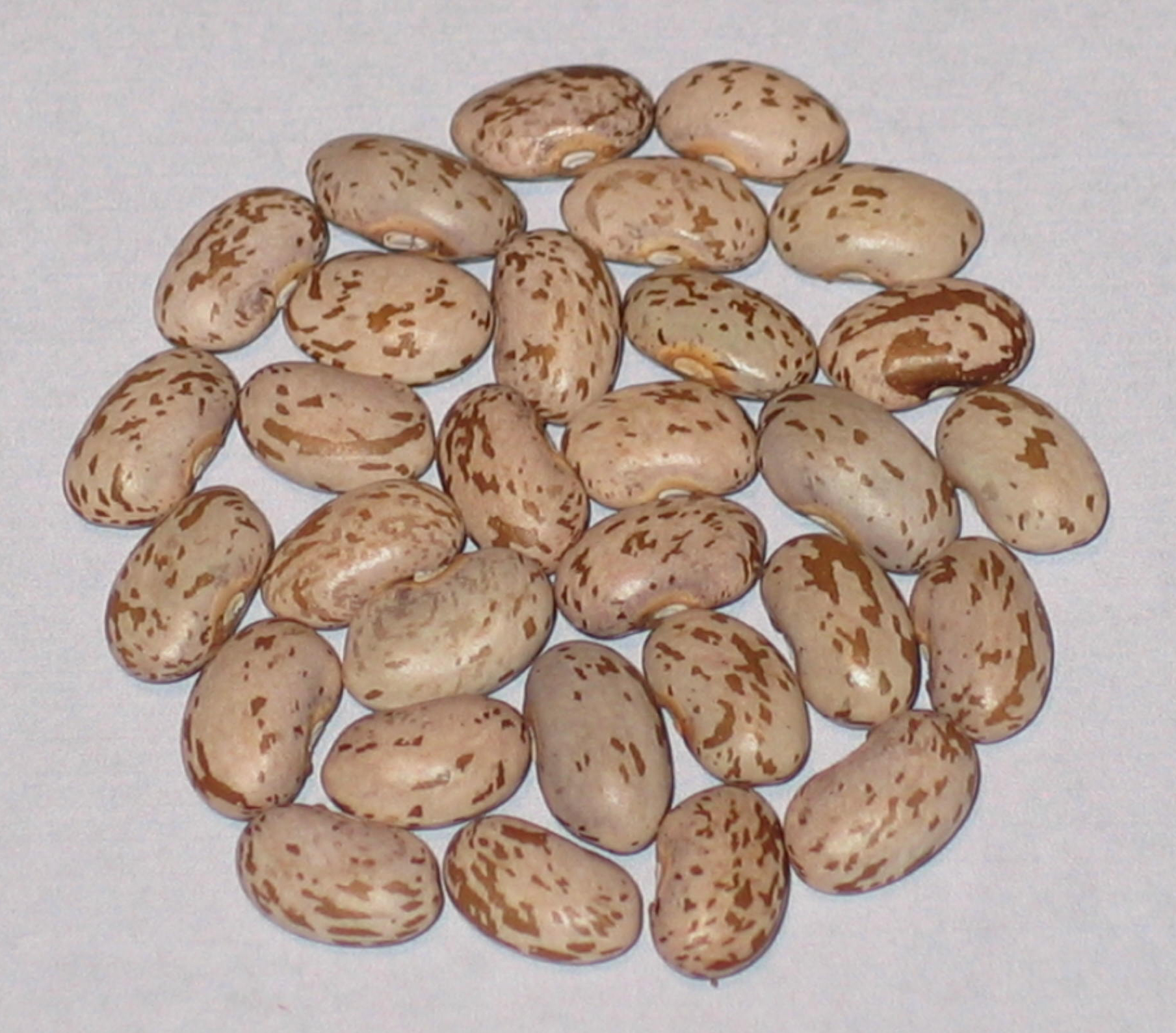
Abundant Little Gem
Packet Size 30 Seeds $5.00
Bush/Dry. A robust variety that thrives without the need for runners. With elegant white blossoms, these productive plants reach a height of 18 to 20 inches. They produce round green pods that closely resemble snap beans, and you can expect the first dry pods to mature in approximately 80 days. This unique variety is an original creation by Robert Lobitz. Robert Lobitz was an influential American plant breeder known for developing various vegetable varieties. He specialized in creating unique and productive crops, particularly beans.
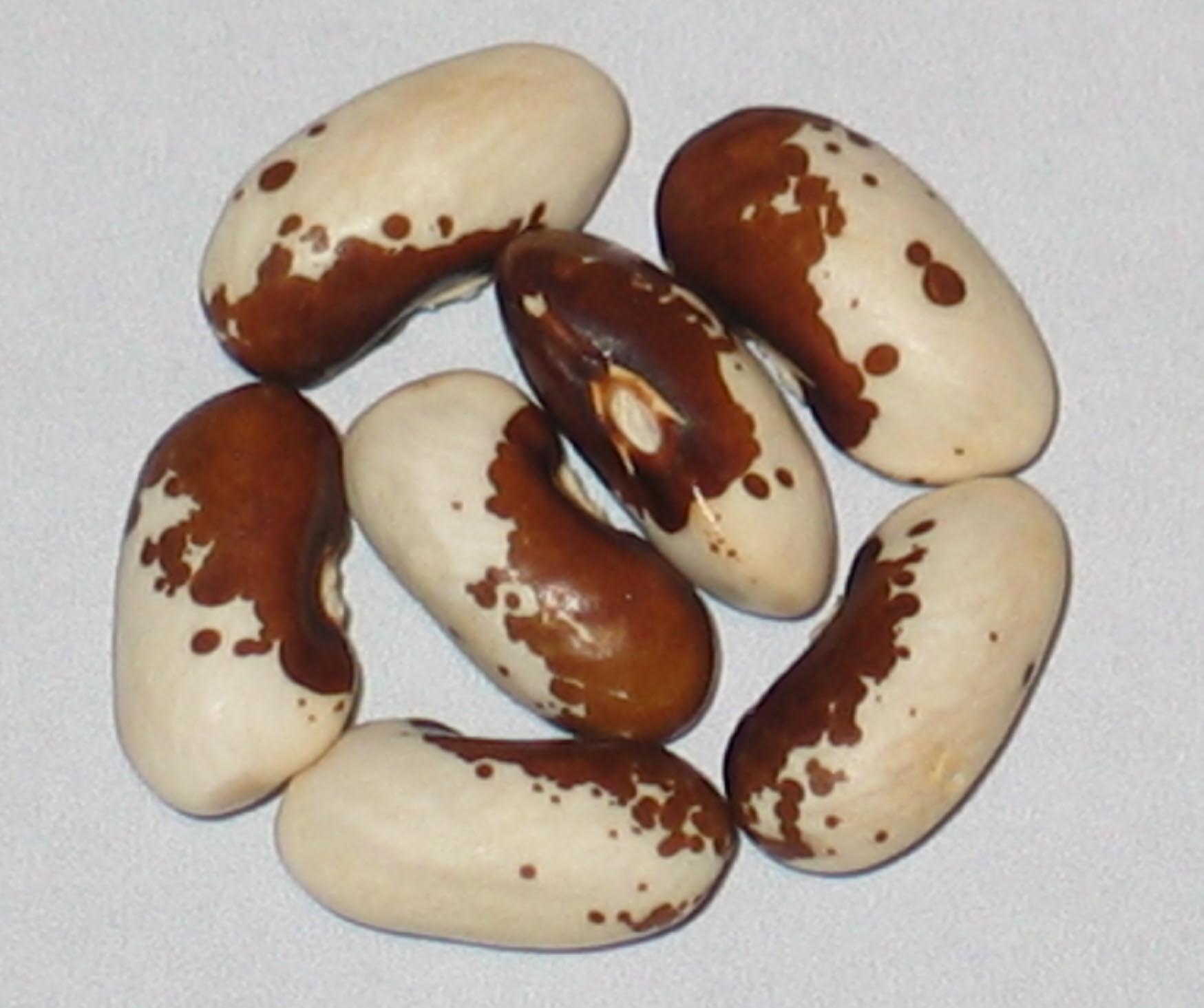
African Cave
Packet Size 25 Seeds $5.00
Bush/Dry. A remarkable variety renowned for its productivity and compact growth. Standing about 18 to 20 inches tall, these plants feature striking white blossoms and produce round green pods that resemble traditional snap beans. The seeds are particularly eye-catching, showcasing a unique blend of brown and white with a prominent brown eye patch that creates an alluring contrast against the irregular white margins. Notably, the "African Cave" matures its first dry pod in just 80 days, making it a swift and rewarding choice for gardeners seeking both beauty and yield in their harvests.

African Premier
Packet Size 25 Seeds $5.00
Bush/Dry. An early horticultural variety with a pink base color from Kenya Africa. My First encounter with African Premier was in 1978 as one of the beans that America's original bean collector "John Withee" had in his Wanigan bean collection. Connecticut resident Harmon Poole donated the bean to Withee in 1977. The bean was purchased in Nairobi, Kenya and brought back to the U.S. by Harmon's grandchildren.
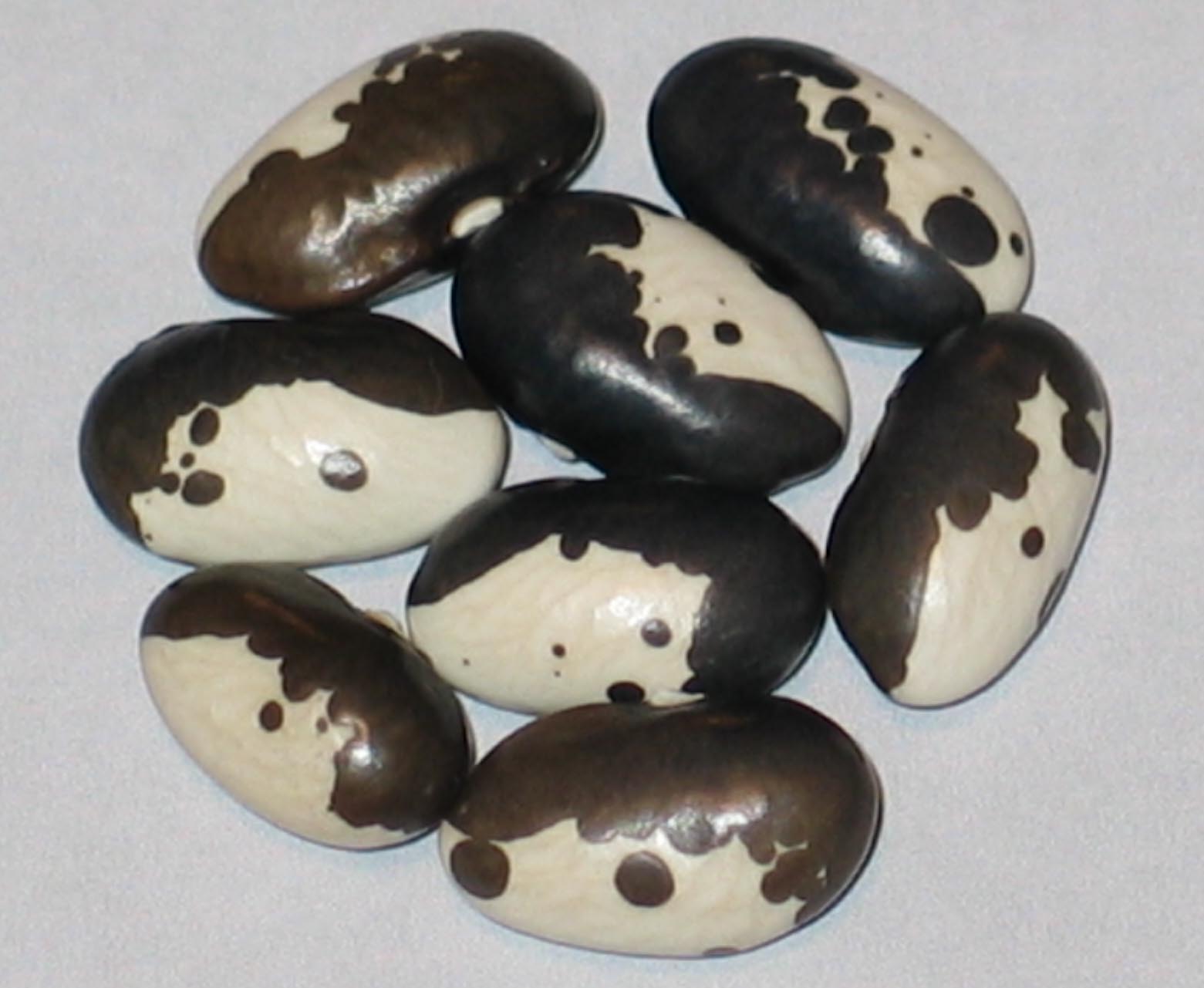
Aghstev Ijevan
Packet Size 25 Seeds $5.00
Pole Dry. This variety is named after the charming town of Ijevan along Armenia's scenic Aghstev River. Vigorous plants can reach heights of up to 7 feet, producing impressive 6-inch long, flat, crescent-shaped green pods. Each pod contains striking seeds characterized by a white base color adorned with a prominent dark gray eye patch. This unique bean is one of many treasures brought to the U.S. by intrepid world traveler and seed explorer Joseph Simcox, making it a captivating addition for any gardener looking to cultivate heritage varieties.
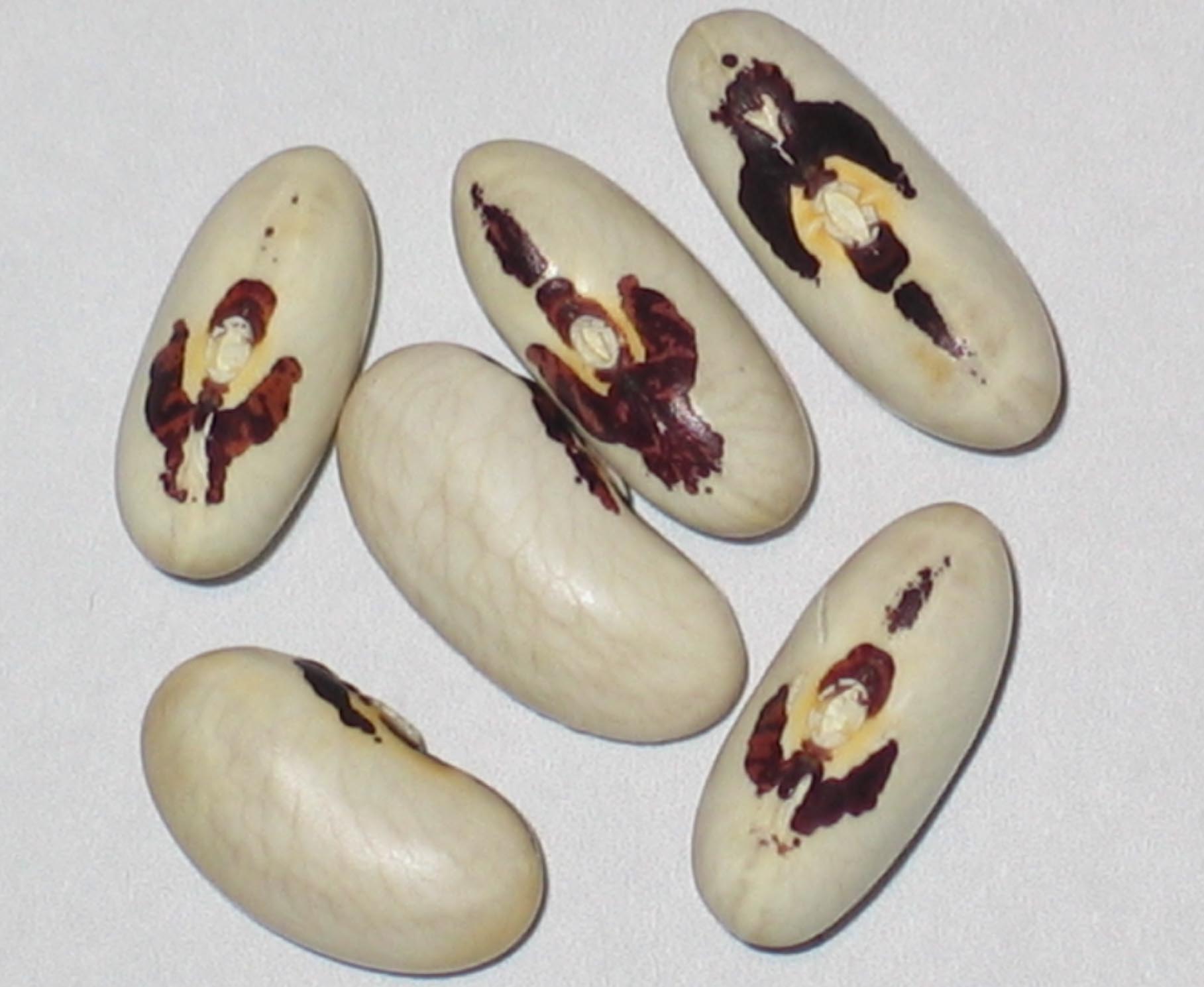
Algarrobo
Packet Size 25 Seeds $5.00
Bush/Dry. A stunning variety that thrives in just 85 days, yielding its first dry pods, which measure approximately 4.5 x 1/4 inches. With delicate cream blossoms, this rare Colombian gem bears a resemblance to the well-known Soldier bean but offers slightly heavier seeds. These upright, productive plants do not have runners, making them ideal for compact spaces. Pods mature sequentially over a span of about three weeks. This unique variety was originally acquired from retired bean grower Amy Hawk, who cultivated it at an impressive elevation of 6,700 feet in Calhan, Colorado, showcasing its adaptability and resilience.

Alice Sunshine
Sold Out
Bush/Snap. A delightful variety boasting white blossoms and upright growth, reaching approximately 20 inches tall without runners. With a swift maturation timeline of about 50 days to the first tender snaps, it transitions to dry seed production around 80 days. These prolific plants yield an impressive harvest of 6-8 inch green pods, perfect for fresh eating or preservation. Developed and named by the late Robert Lobitz of Paynesville, Minnesota, this original bean variety promises both flavorful harvests and a touch of gardening history.
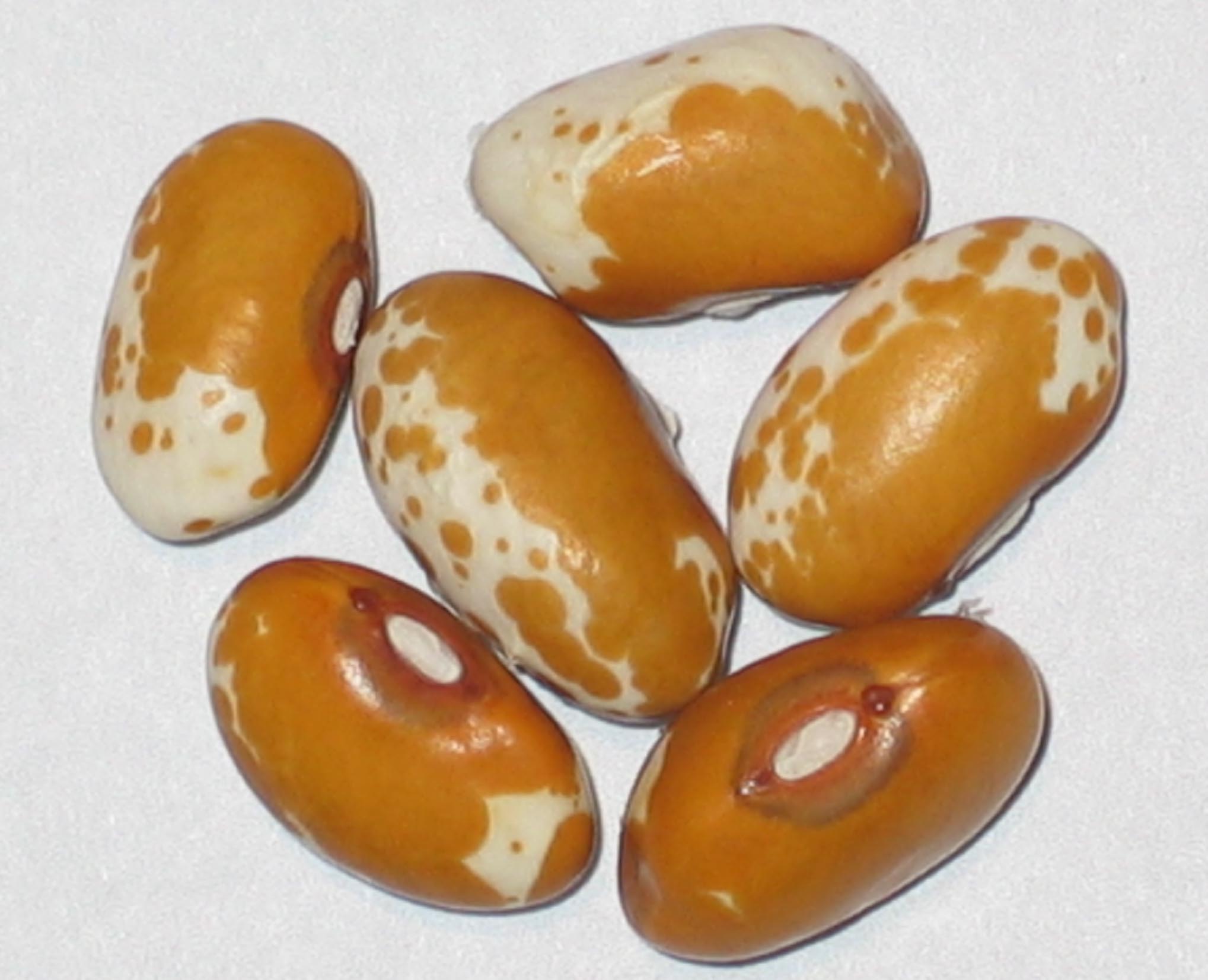
Amber Pearl
Packet Size 25 Seeds $5.00
Bush/Dry. A bush variety that showcases delicate light pink blossoms and boasts a remarkable 90 days to harvest first dry seeds. With its upright growth habit and absence of runners, this high-yielding cultivar stands out in any garden. Proudly developed by the late Robert Lobitz of Paynesville, Minnesota, the Amber Pearl is one of his original creations, promising both quality and a touch of nostalgia for bean enthusiasts.

Andromeda
Packet Size 25 Seeds $5.00
Pole lima. Very productive. Produces lots of pods and beans. A long season bean that can even be successfully grown in southern Canada with an early start in a small pot then transfered to the garden at planting time. Started out as a Ping Zebra cross with another lima in 2014. Several grow outs I believe have proven to me that the lima is stable. Small seeded like Ping Zebra but with the beautiful addition of dark blue or black speckling.
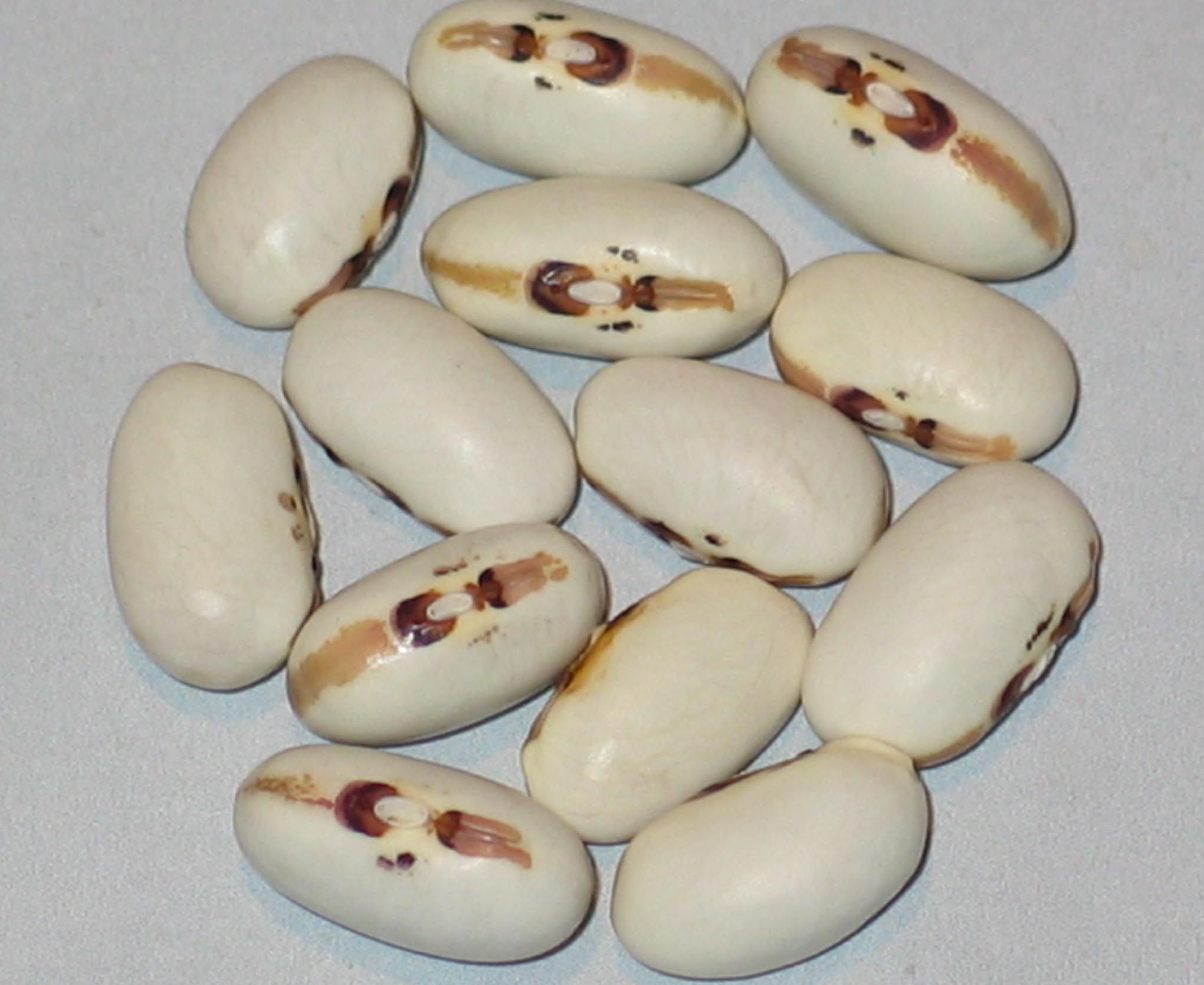
Angel Eye
Packet Size 25 Seeds $5.00
Bush/Dry. A stunning bush variety characterized by its delicate white blossoms and an impressive 85 days to the first dry pods. Reaching heights of 18 to 20 inches, these robust plants demonstrate extraordinary productivity, with six plants yielding over 10 ounces of beans. Angel Eye's graceful pods hang elegantly above the soil, making it a true delight in the garden. This original bean, discovered in my own gardens, holds a special place in my heart, and after much contemplation for the perfect name, I was inspired by Jaanes Aalders from Groningen, Netherlands, who suggested "Angel Eye," a fitting tribute to its beauty and abundance.

Armenian Giant Black
Packet Size 15 Seeds $5.00
Pole/Snap. A striking pole variety known for its captivating pink blossoms and impressive 8 to 10-inch-long snap pods. With a maturation period of approximately 115 days until the first dry seeds, this bean brings both beauty and size to your garden. Its name speaks to its rich heritage, making it a distinctive addition to any garden or culinary endeavor, where its robust flavor and generous yield will surely delight bean enthusiasts.

Atwater
Packet Size 25 Seeds $5.00
Bush/Snap. Blossom pink. A delightful bush variety distinguished by its charming pink blossoms and true bush form that grows neatly without runners. The pods, measuring approximately six inches long, begin their drying process for seed around 90 days, ensuring a reliable harvest. This exceptional bean is a Robert Lobitz original, named and introduced in 1999 in honor of Atwater, Minnesota, nestled in east central Kandiyohi County along Minnesota Highway 12. The Atwater bean offers both visual appeal and robust performance, making it a fantastic choice for any home garden.

Aubrey Deane
Packet Size 20 Seeds $5.00
Pole/Lima. A cherished family heirloom dating back to pre-1890 from Greene County, Virginia. Known for its impressive productivity, this variety features pods that shatter to release beans if left too long on the vine, so timely harvesting is essential. The seed coat boasts a similar color and pattern to the Snow On The Mountain variety, yet it matures earlier, making it a valuable addition to any garden seeking both heritage and performance..
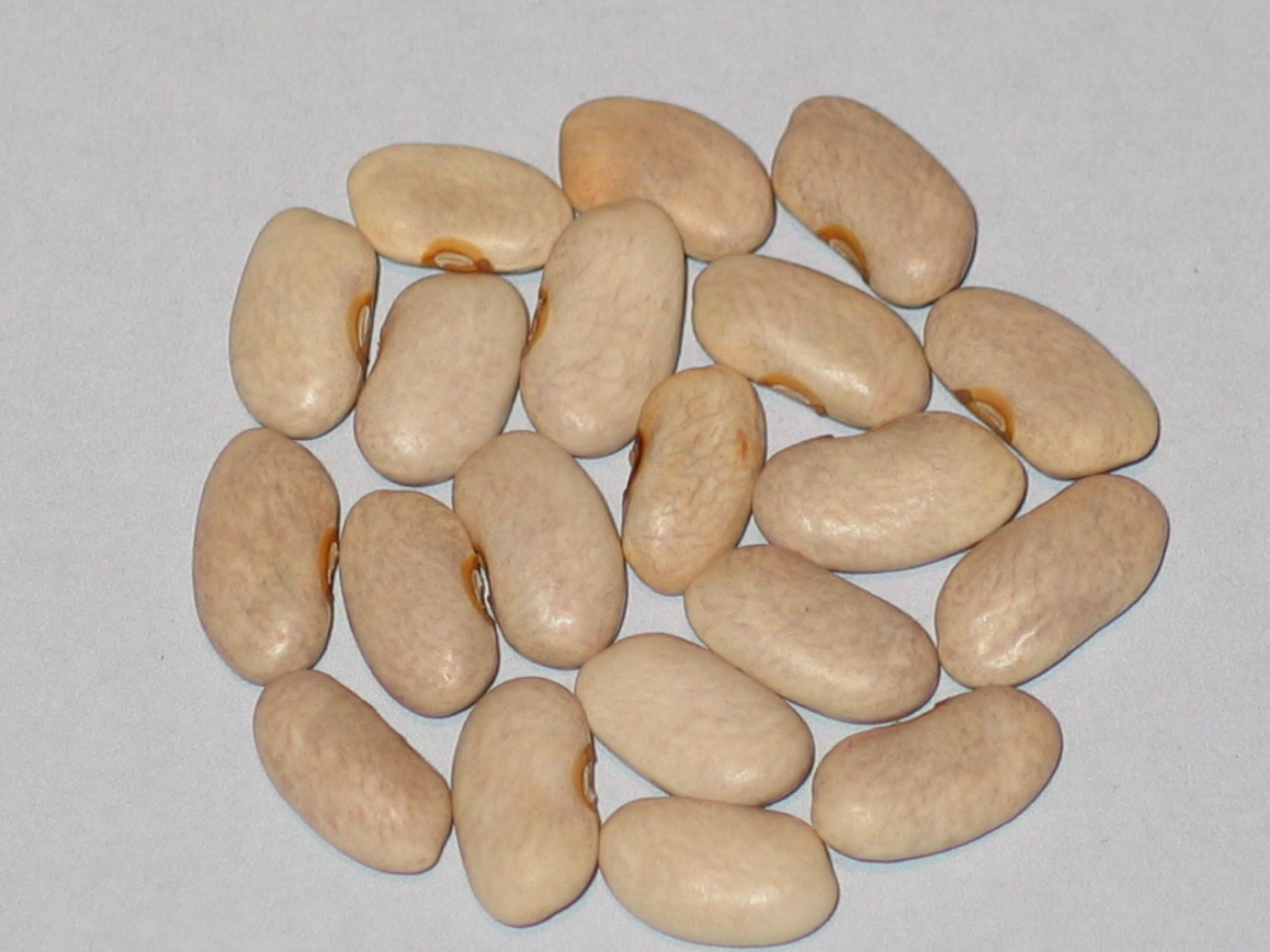
Aussie Purple King
Packet Size 25 Seeds $5.00
Pole/Snap. A vibrant pole snap bean hailing from Australia. This exceptional variety boasts excellent flavor with its bright, flattened purple pods, which can grow up to seven inches long. Known for its prolific yields, the plants provide a continuous harvest over many weeks, making it a gardener's delight. Notably, the pods turn a lovely green when cooked, adding a visually appealing touch to your culinary creations. Enjoy the unique taste and ornamental beauty of this outstanding snap bean!
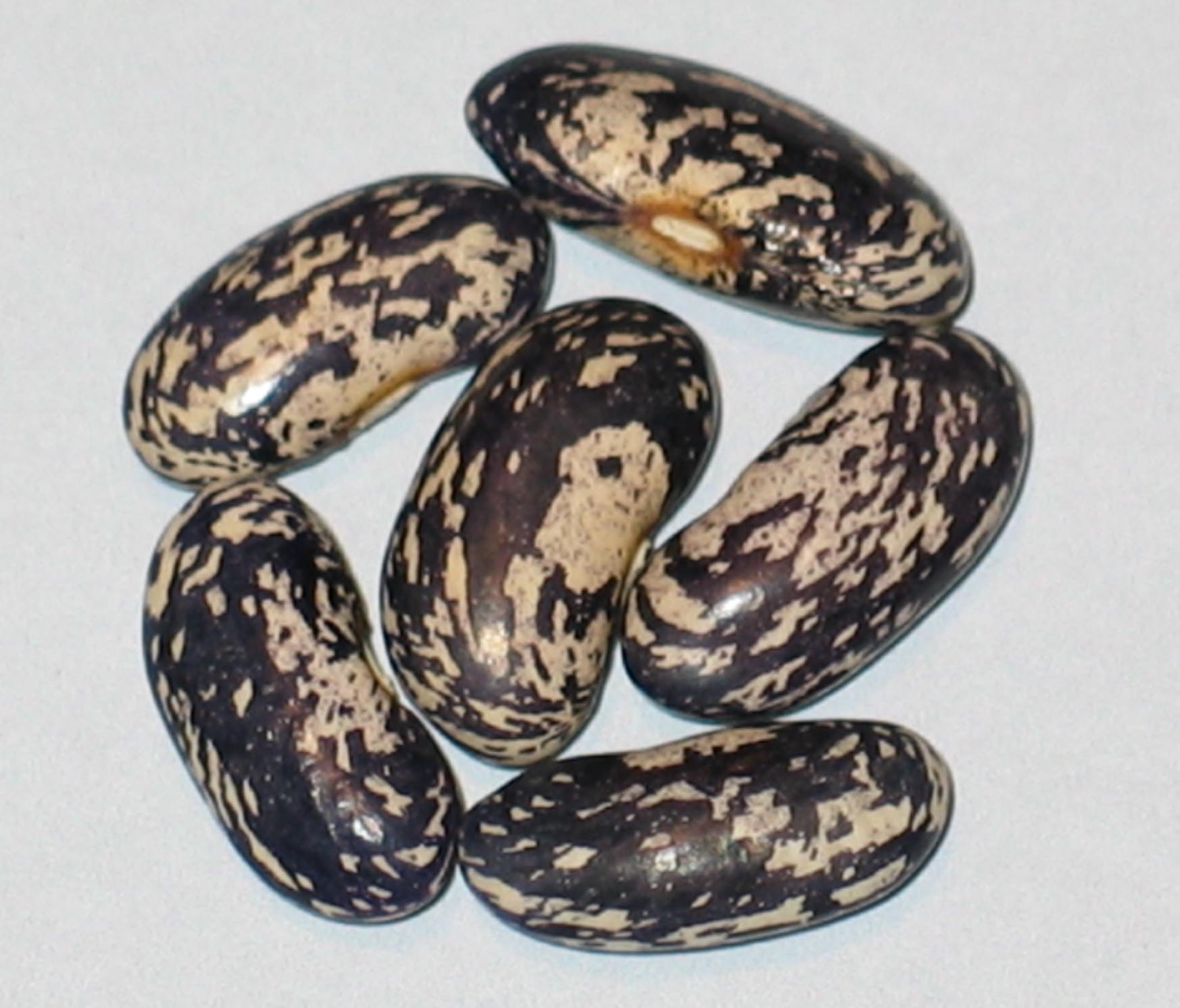
Bamberger Blaue
Packet Size 25 Seeds $5.00
Bush/dry. A remarkable bush dry bean variety, 98 days to produce its first dry pods. These robust, upright plants reach up to 28 inches tall and do not require runners, making them space-efficient. With 6.5-inch green pods that yield 5 to 6 beautiful, slightly kidney-shaped seeds, this variety is not only productive but also visually appealing when freshly harvested. A row space of just 9.25 feet can yield around a pound and a half of beans, making it a great choice for home gardeners. Used as a baked bean in Germany, was donated by German bean grower Astrid Storm in 2013 and was originally discovered at a farmers market in Bamberg, Bavaria, in 1980
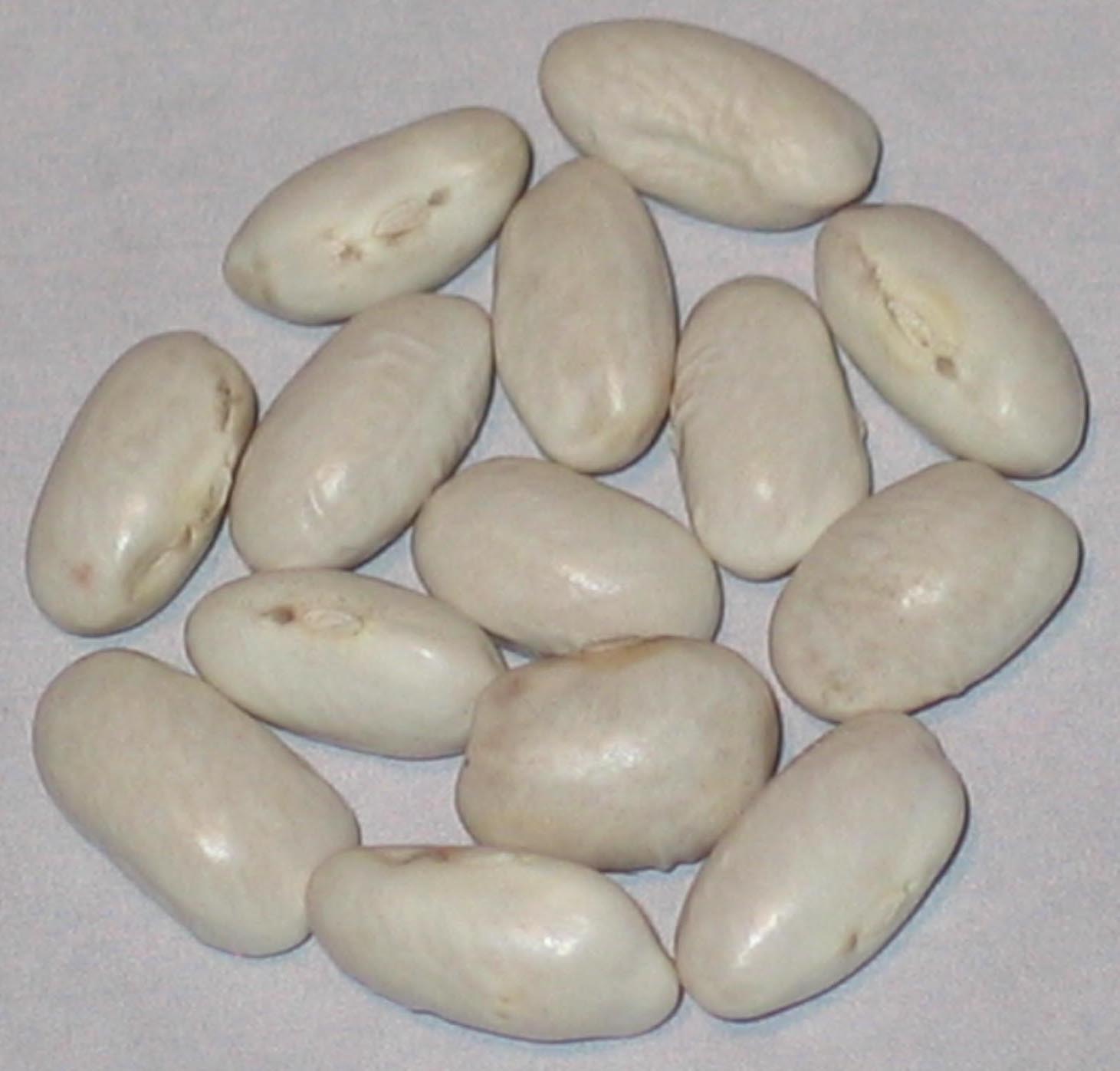
Barnes Mountain
Packet Size 30 Seeds $5.00
Pole/Snap/Dry. The "Barnes Mountain" is a unique pole snap dry bean variety that hails from the region near Barnes Mountain in Estill County, Kentucky. Traditionally planted among cornfields, this variety features round-podded beans that are not only delectable when harvested young as green pods but also cook quickly when dried. Its adaptability and culinary versatility make it a fantastic addition to any garden, offering both flavor and convenience for home cooks.
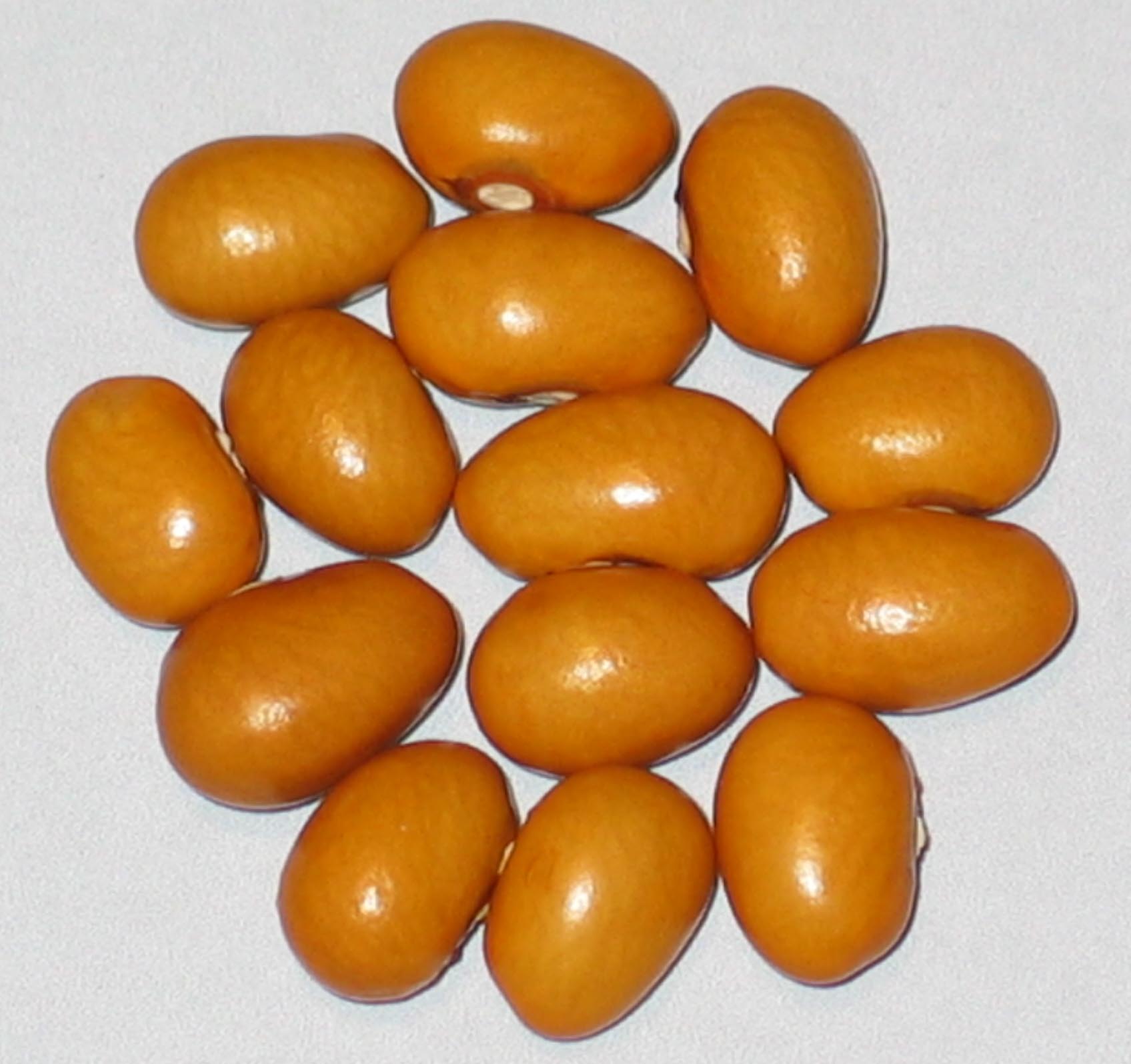
Beka Brown
SOLD OUT
Bush/Dry. The "Beka Brown" is a highly productive bush dry bean variety that begins its dry seed crop in approximately 90 days. Characterized by its green, short, rounded pods, this variety is noted for its vigorous growth, often producing tendril-like growths. First described in the 1980s in John Withee's Wanigan bean catalog, the Beka Brown is recognized as a Canadian bush variety prized for its versatility in soups and baking.
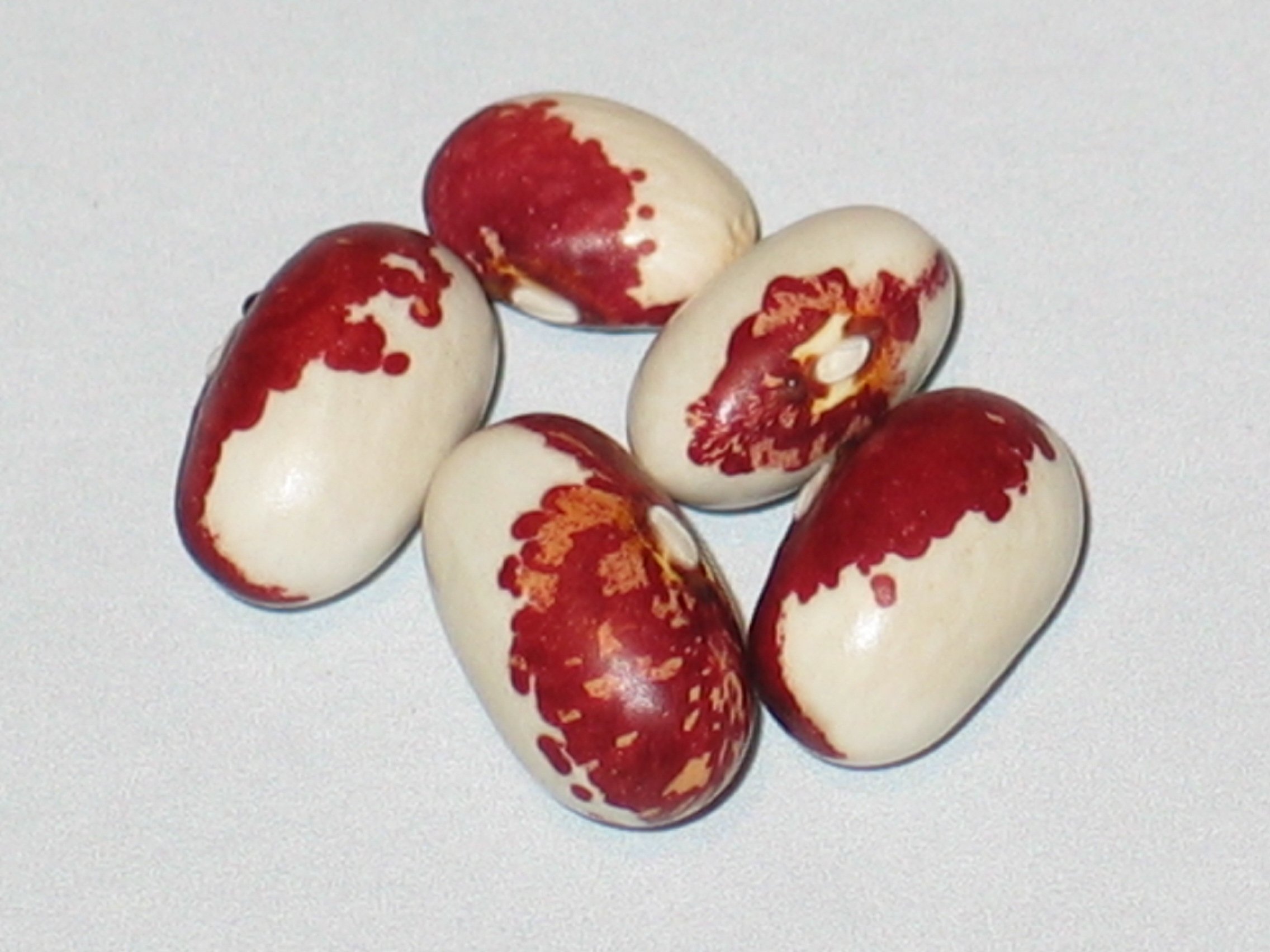
Berry's Best
Packet Size 30 Seeds $5.00
Bush/Dry. Berry's Best is a bush bean variety developed by the late horticulturist and seed saver, Dr. David Berry, who was known for his work in preserving heirloom seeds. This particular variety is appreciated for its high yields, disease resistance, and excellent flavor, making it a popular choice among home gardeners and farmers. While specific historical details about its exact origin may vary, it is recognized for its contributions to sustainable agriculture and biodiversity in the gardening community.

Big Dipper
Packet Size 20 Seeds $5.00
Pole/Dry. The "Big Dipper" is a pole dry bean that I named for its strikingly large seeds and impressive yields. This original variety emerged as a unique segregation from a crossed Canadian bean called "Night Sky." I believe that eventually this bean will become known for its beauty and productivity.
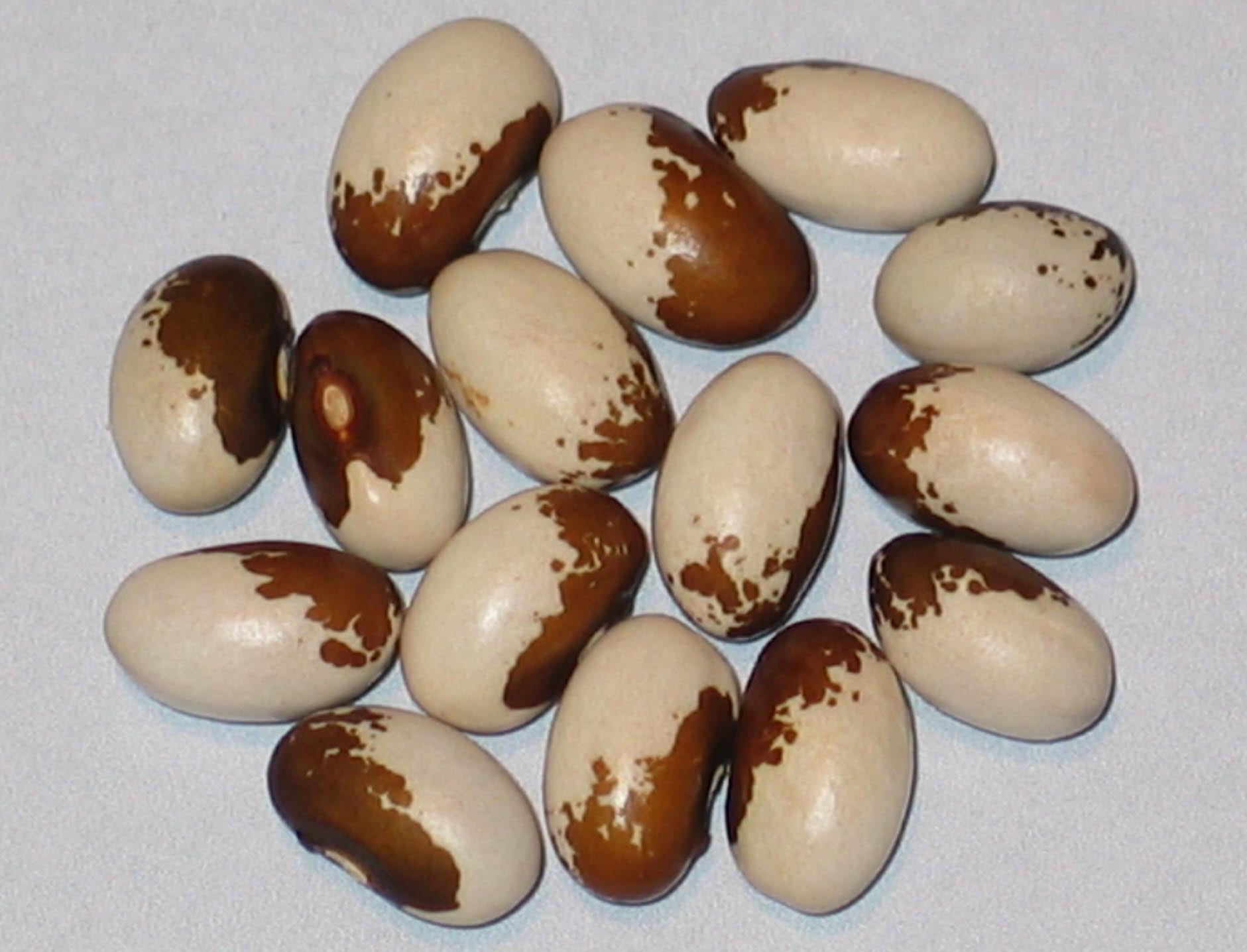
Bird Egg
Unavailable
Semi-Runner/Dry. Acquired this bean from Seed Savers Exchange in the early 80's. Given to me on loan from Kent Whealey. Saw the beans description in an older issue of the SSE yearbook then reaquired this bean from that member. When the seed arrived I recognized it as the Bird Egg that I first knew from SSE in the early 80's but since the bean has been traded among SSE members for nearly 3 decades the bean seed and the leaves of the plant now show some differences from Bird Egg #2 which this bean is related too.
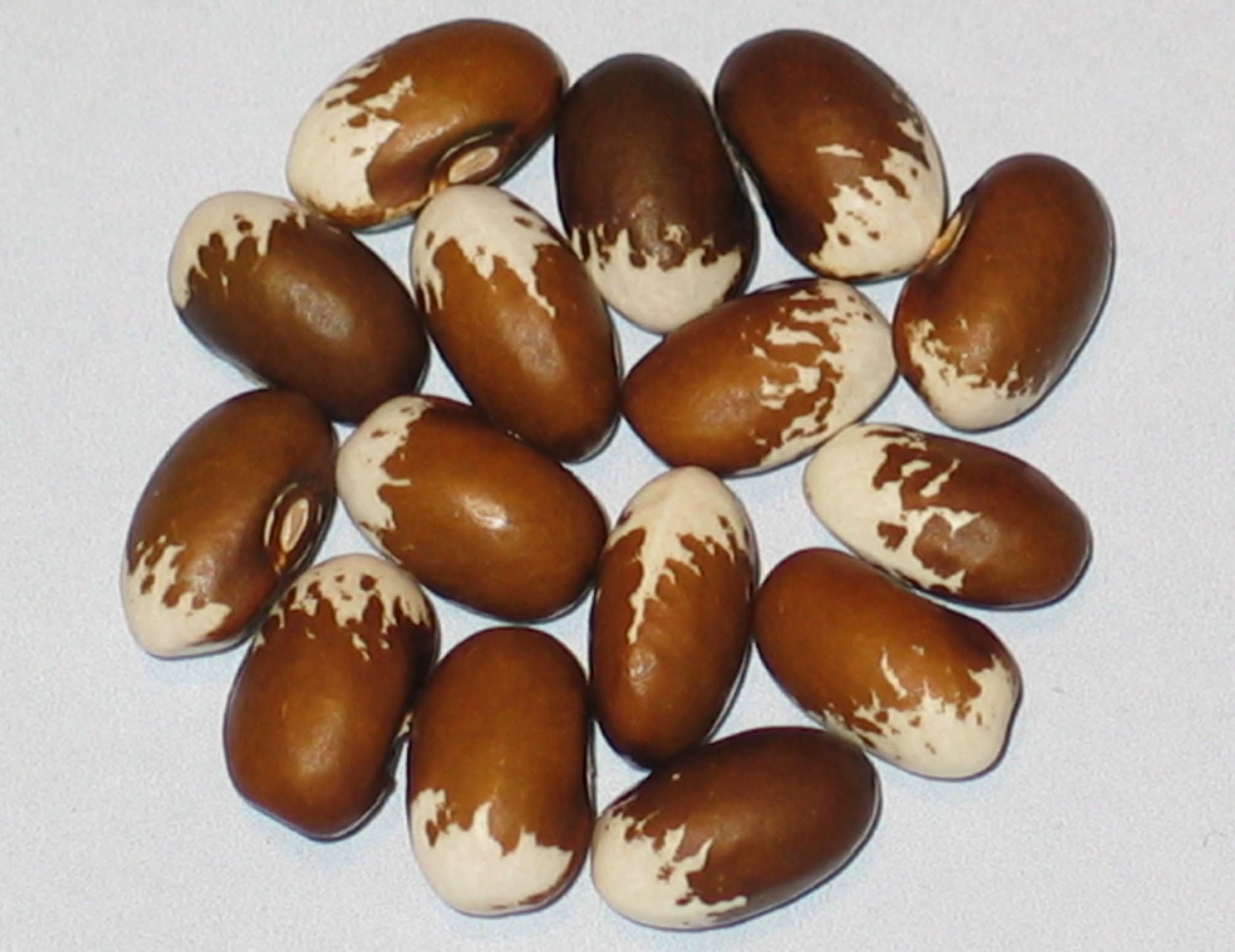
Bird Egg #2
Packet Size 45 Seeds $5.00
Semi-Runner/Dry. 110+ days to first dry pods. Very productive plants 20 inches tall sprawl on the ground, and do not stand upright as they mature. A bean I had originally acquired from Seed Savers Exchange in the early 80's and given to me on loan from Kent Whealey. The bean orignally was called Bird Egg. During the 80's when I had filled requests for this bean for members of the Seed Savers Exchange. In early 2013 I acquired the bean again from SSE's Heritage Farm and found that the beans name had been changed to Bird Egg #2.
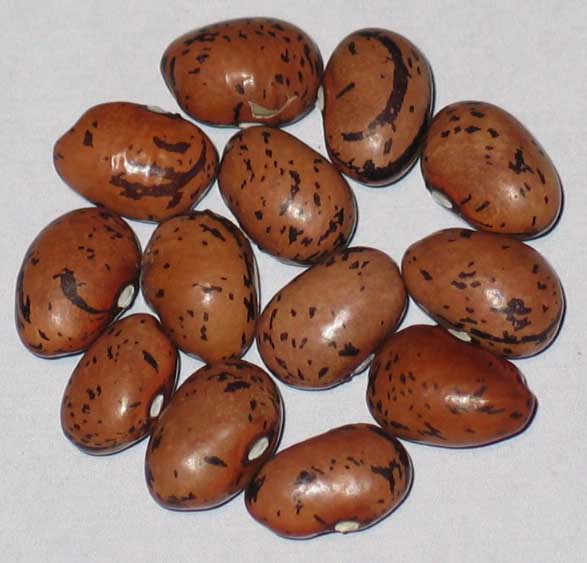
Bird Egg Pole
Packet Size 20 Seeds $5.00
Pole/Dry. Large seeded cranberry type bean sometimes called horticultural beans. Likes warm summers. First pods begin drying in about 90 to 100 days.
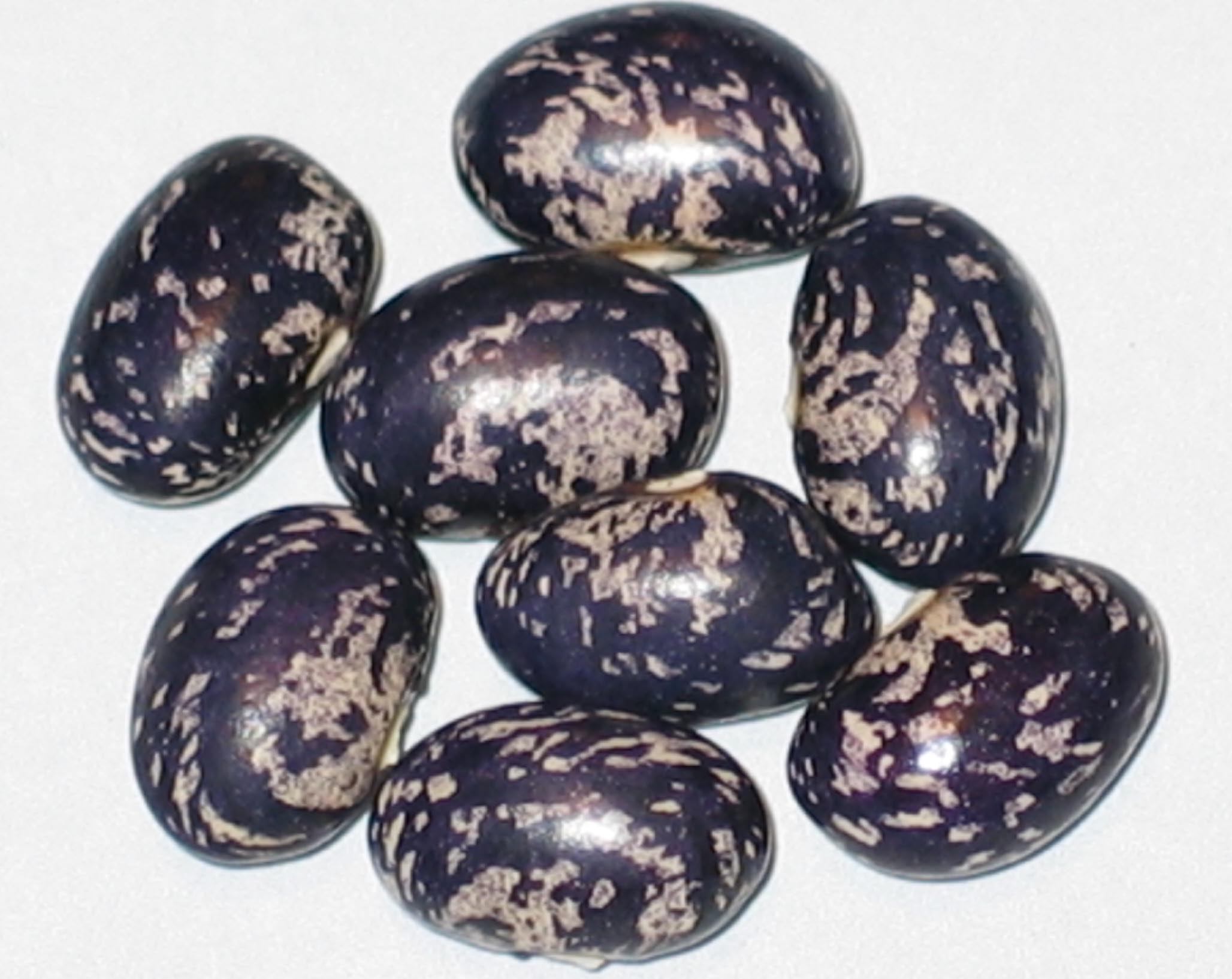
Bird Egg Blue
SOLD OUT
Bush/Dry. A remarkable bush bean that has thrived since its discovery in my garden back in 1981. Renowned for its stability, this upright-growing variety remains runner-free and has later maturity than most of the beans I grow. First featured in the 1983 SSE yearbook, it is also commercially available through Heritage Harvest Seeds in Fisher Branch, Manitoba, Canada. Enjoy the unique charm and resilience of this distinctive bean.

Black And White Goose
Packet Size 25 Seeds $5.00
Pole/Dry. Introducing this exceptional pole bean variety, reaching heights of 5 to 6 feet. Discovered in my garden around 1980, it features distinct markings with wider spacing than many beans that sport smaller streaks and speckles. Inspired by the lore of "goose beans," I decided to embrace this whimsical naming tradition, as its appearance closely resembles another goose variety. Join me in celebrating the unique heritage of this delightful bean.
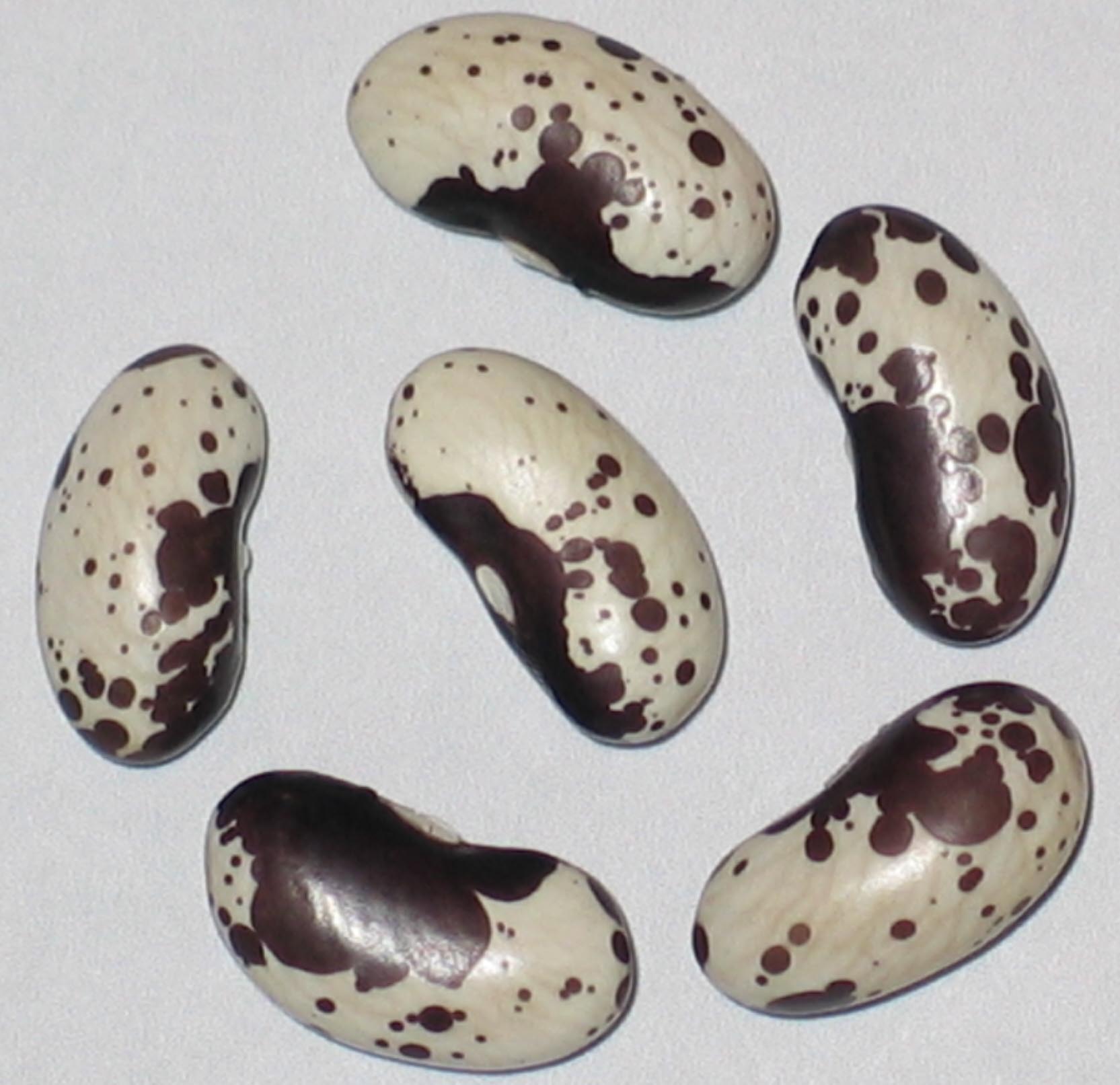
Black And White Trout
Packet Size 25 Seeds $5.00
Bush Dry. This unique bush dry bean variety, is characterized by a seed coat pattern reminiscent of Jacob's Cattle (also known as Trout). While the coloration may appear dark, it is more accurately described as a rich deep purple rather than true black. This intriguing bean was sourced from now retired bean grower Amy Hawk of her E5 Ranch/Simply Beans in Calhan, Colorado, where she cultivated her beans at an impressive altitude of approximately 6,700 feet. Discover the distinctive heritage of this remarkable variety.
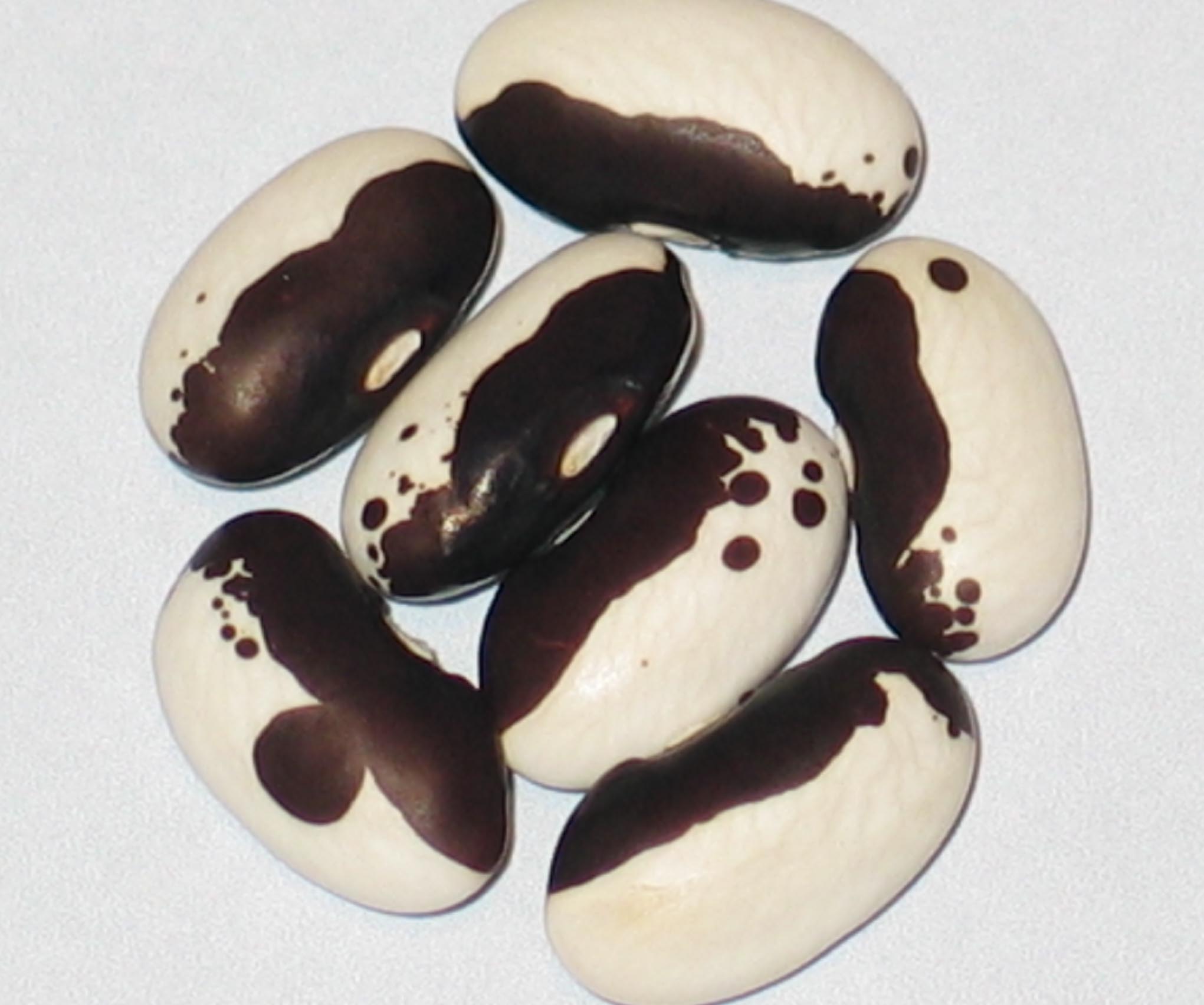
Black Cattle
Packet Size 25 Seeds $5.00
Bush/Dry. Introducing this outstanding bush dry bean variety, which produces its first dry pods in just 90 days. With good-sized seeds and robust, productive plants, this bean promises a bountiful harvest. I acquired this gem in 2014 from Professor Jurgen Klapprott of Lauter-Appendorf, Germany, as it lineage originates in the south of France. Experience the exceptional quality and heritage of this remarkable bean.
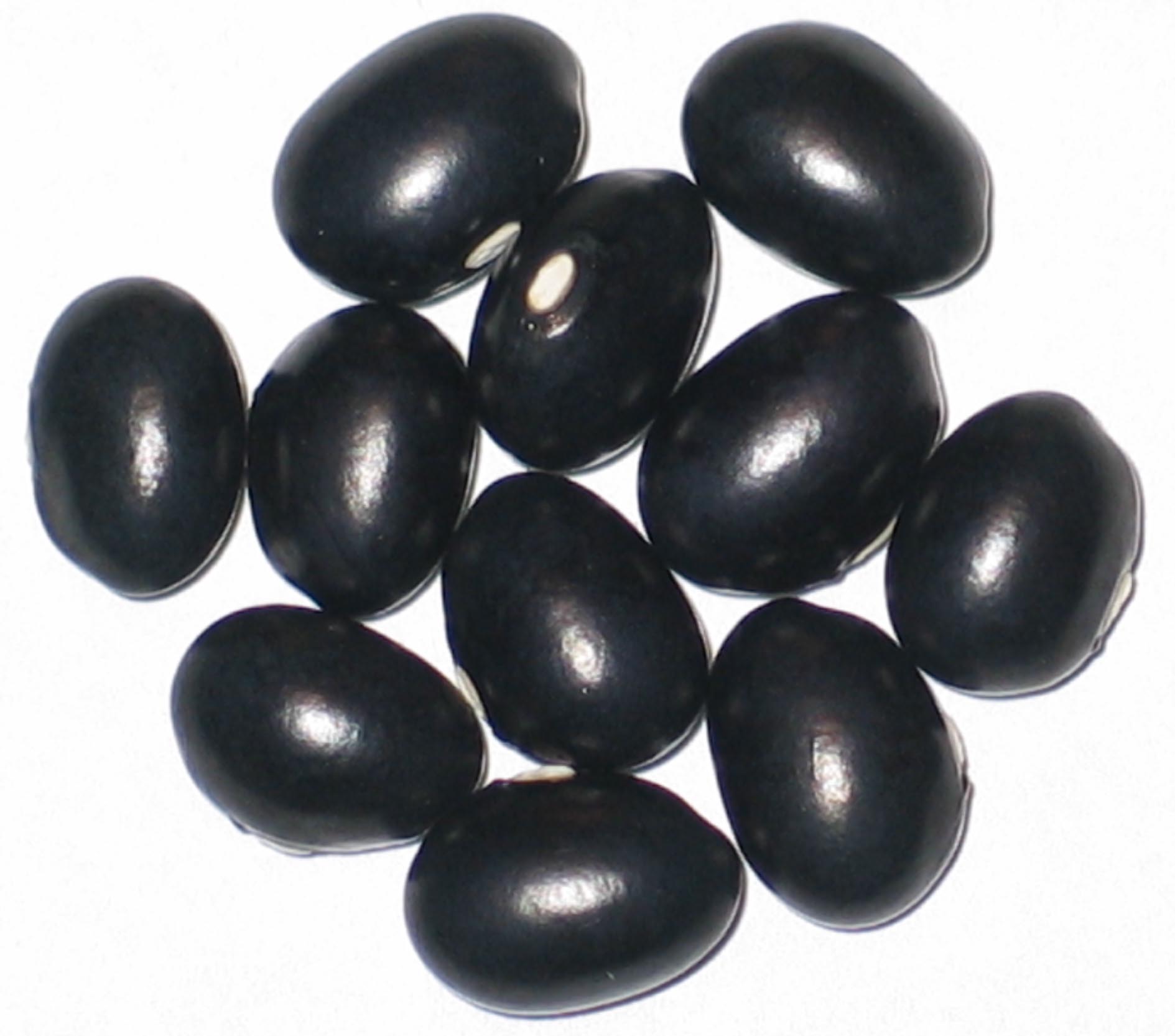
Black Coco
Packet Size 25 Seeds $5.00
Bush dry. This bush dry variety features beautiful pink blossoms and begins producing dry pods around 85 days. It yields a lovely, nicely rounded bean that not only serves well for dry use but has been said to also be enjoyed as snap beans or shelled while the seeds are still soft and slightly immature. The plants exhibit an upright growth habit without runners, making them easy to manage and harvest, adding to their appeal for any garden enthusiast.
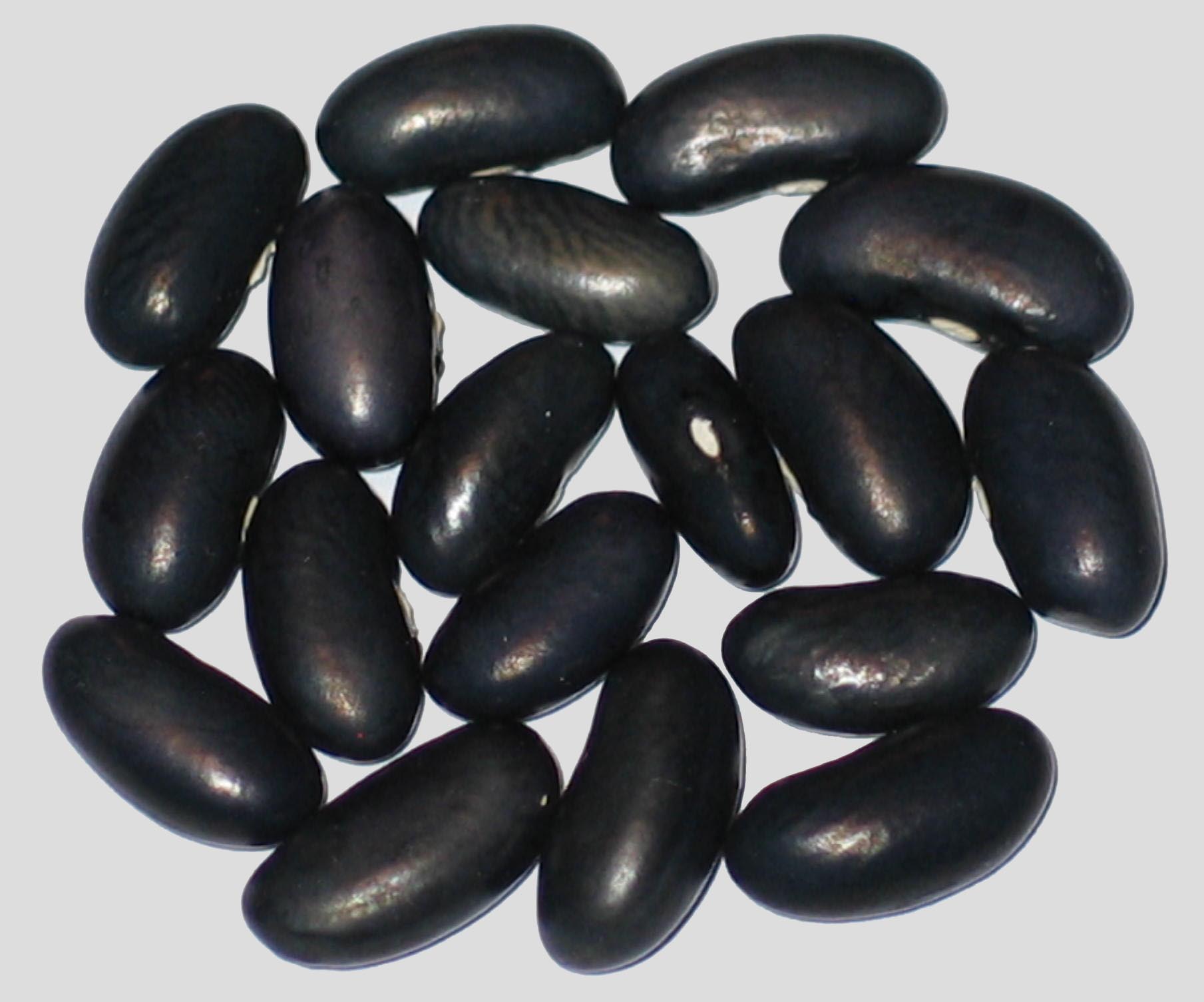
Black Hawk
Packet Size 25 Seeds $5.00
Bush dry. This bush dry bean variety, featuring striking pink blossoms, boasts productive plants that begin yielding dry pods around 90 days. Named by the late Robert Lobitz of Paynesville, Minnesota, this bean showcases a rich history, as he released it through the Seed Savers Exchange yearbook in Decorah, Iowa, in 1999. Its pedigree and reliable productivity make it a valuable addition to any garden.

Black Good Mother Stallard
Packet Size 25 Seeds $5.00
Pole/Dry. This pole dry bean variety was discovered by Debbie Groat of Rhodes, Michigan, among Good Mother Stallard beans over a decade ago. Believed to be a mutation, this bean has consistently grown true to type without segregation. While the beans are about half the size of Good Mother Stallard, they exhibit a similar striking pattern of black and white, making them an interesting addition for growers seeking unique varieties.

Black Horse
Packet Size 30 Seeds $5.00
Bush Dry. The Black Horse bean, adorned with stunning deep pink blossoms, is a productive variety that begins producing dry pods around 85 days after planting, with the remaining pods maturing sequentially over a period of approximately three weeks. While its beans are smaller than those of Black Coco, this variety makes up for it with a higher yield. Originating as an outcross and gifted to me by Will Bonsall of Industry, Maine—known for his esteemed Scattered Seed project. After starting grow-outs in 2015, I proudly named this excellent variety in 2018, highlighting its characteristics and good productivity.

Black Nightfall
Packet size 50 seeds $5.00
Semi-Runner/Dry. A semi-runner variety that typically reaches maturity in approximately 100 days, producing dry seeds. These vine-like climbing plants can be cultivated on the ground akin to bush beans, although they thrive even more when supported. They yield abundantly, with 4 to 5-inch oval green pods lightly streaked with purple, containing 4 to 6 small seeds each. While the seeds may be smaller, they compensate in volume, offering a rewarding harvest. As the beans mature, the pods dry rapidly, signaling readiness for harvest.
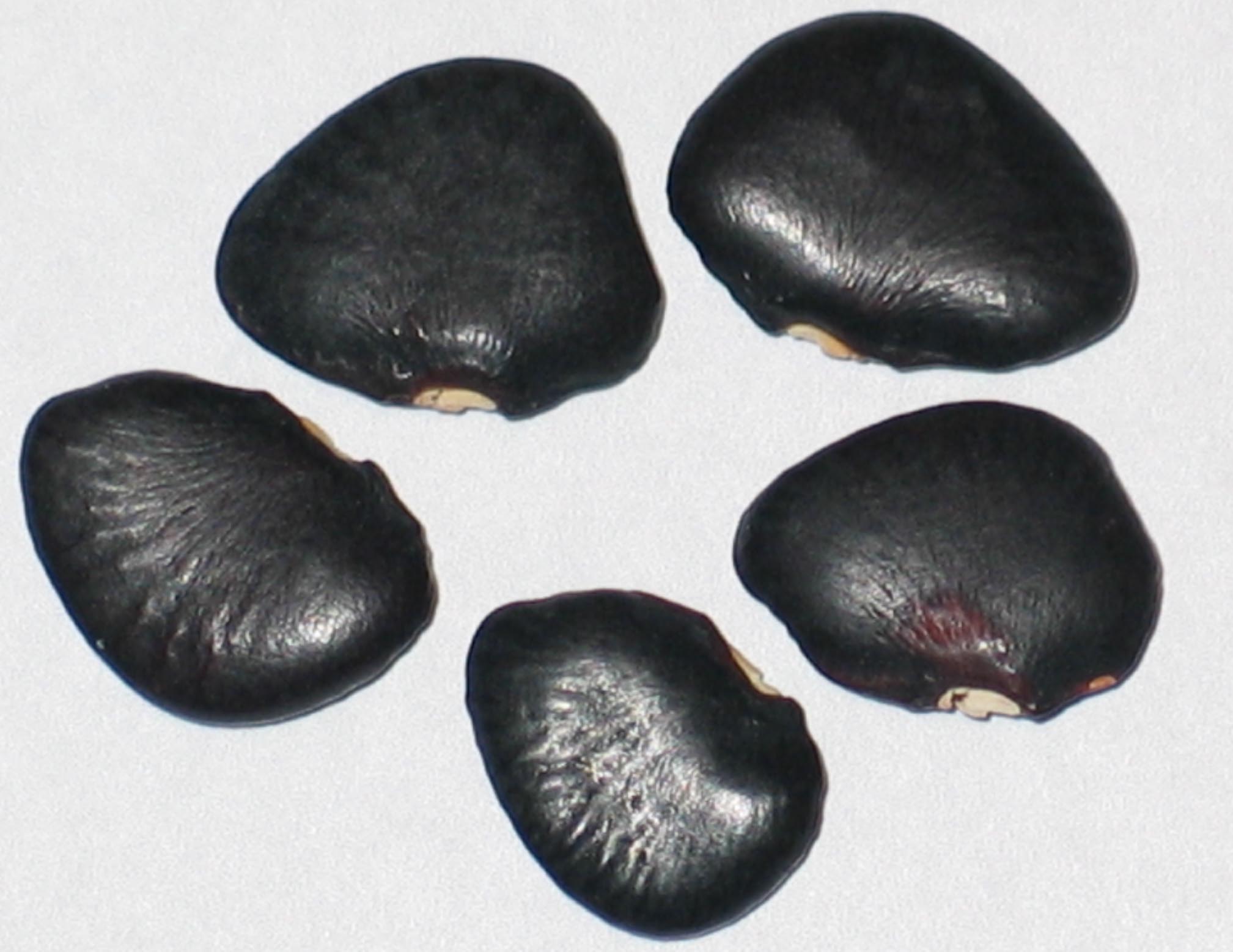
Black Star
Packet Size 20 Seeds $5.00
Pole Black seeded Lima variety is a medium-sized seed lima bean that typically starts producing dry pods in about 90 days. Known for its climbing habit, this pole variety requires support for optimal growth and productivity. Sourced from the Sandhill Preservation Center in Calamus, Iowa, it plays a role in preserving heirloom and open-pollinated plant varieties. This lima bean is appreciated for its flavor and productivity, making it a valuable addition to traditional gardens and sustainable agricultural efforts.

Black Trout
Packet Size 25 Seeds $5.00
Bush/Dry. Black Trout is a dry bean that begins producing mature seeds in approximately 85 days. The plants feature light pink blossoms and yield seeds that are uniquely patterned, reminiscent of Jacob's Cattle beans. However, the seeds of Black Trout have a color that leans more towards purple and white, akin to the appearance of Black and White Trout. This distinct coloration and pattern make it an interesting and attractive choice for gardeners and bean enthusiasts.
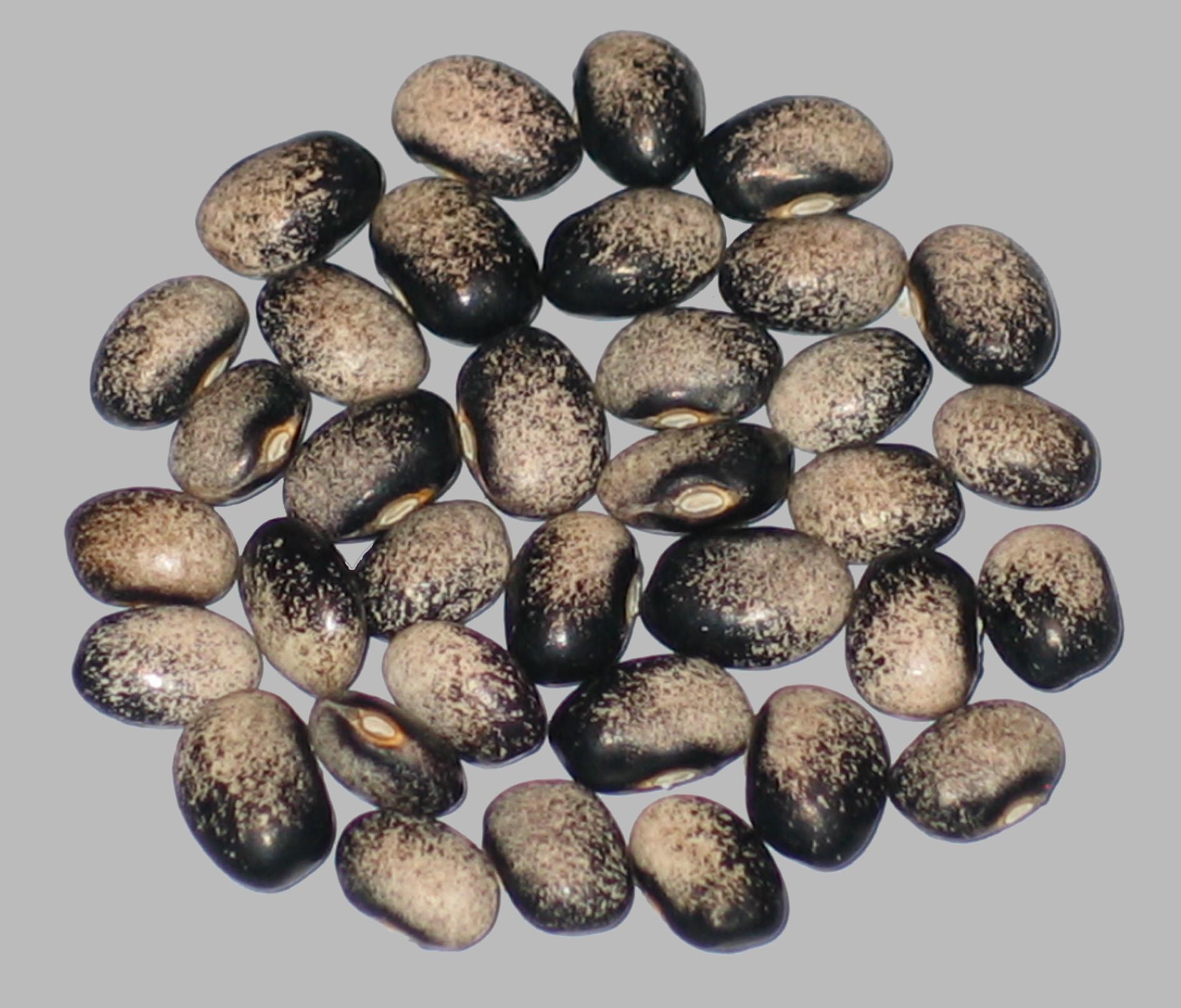
Black Turkey
Packet Size 30 Seeds $5.00
Pole/Dry. Dry bean variety known for its small seeds and prolific production of 4-inch pods. With its remarkable yield, this bean is versatile and suitable for a variety of culinary applications in bean recipes. Acquired in 2014 as an unnamed cross from Mark Christensen of the Central Tree Crop Research Trust of New Zealand, it has been grown out and refined over time, leading to its eventual naming. This variety's impressive productivity and adaptability make it a valuable addition to any garden.
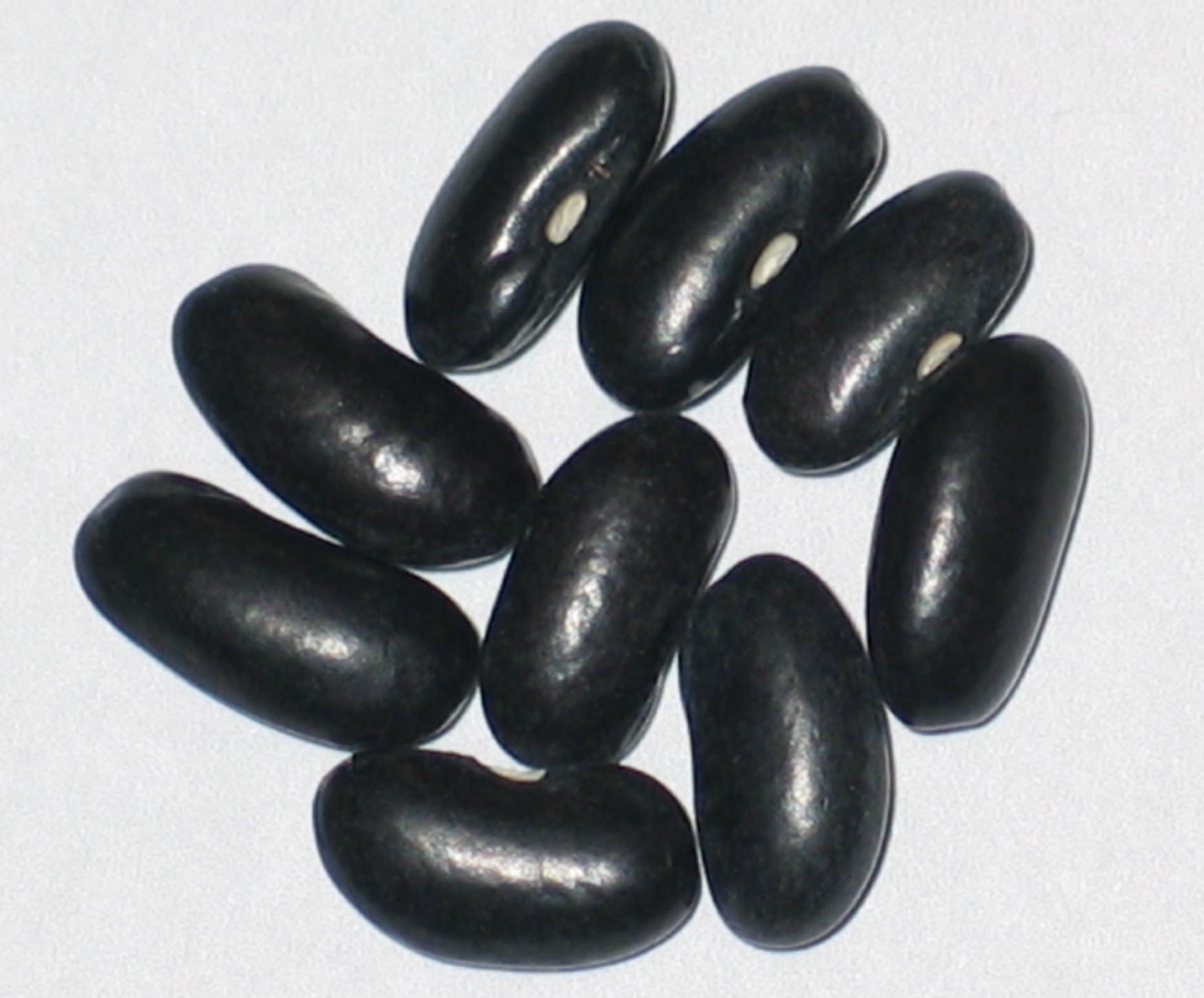
Black Valentine
Packet Size 35 Seeds $5.00
Bush/Snap. Blossom pink. This bean variety is characterized by its pink blossoms and hardy nature. Standing 12 to 14 inches tall with an open foliage structure, this productive plant is an heirloom variety established before 1850. It produces dark green pods that are suitable for snap beans in approximately 50 days, while the dry seeds become ready around 75 to 90 days. Its historical significance and reliable performance make Black Valentine a cherished choice for both gardeners and bean enthusiasts.
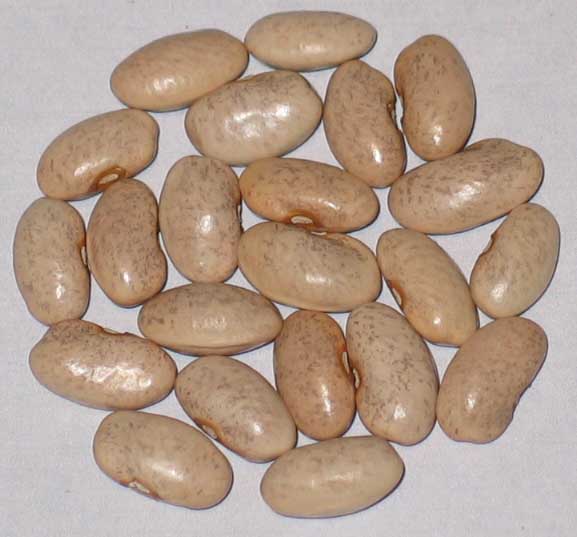
Blauhilde
Packet Size 25 Seeds $5.00
Pole/Snap. Blauhilde is a striking pole snap bean variety from Germany, known for its beautiful purple blossoms and highly productive, tender, stringless purple pods. The plants can grow up to 12 feet tall, featuring vines and leaves with distinctive purple veining. Remarkably drought-tolerant and resistant to mosaic virus, Blauhilde offers both aesthetic appeal and robust performance, making it a favorite among gardeners seeking both beauty and productivity in their bean crops.

Blooming Prairie
Packet Size 35 Seeds $5.00
Bush. Blossom fushia. Purple poded dry bean. First Dry pods in about 90 days. Plants grow with an upright form and runnerless. This bean is one of the many original varieties of the late Robert Lobitz. Named after Blooming Prairie, Minnesota which is located just slightly southwest of Rochester, Minnesota along Minnesota state route 30. The town lies mostly in Steele County. Owen Bridge of Annapolis Seeds in Nova Scotia declares that Blooming Prairie is one of the most beautiful dry beans he has ever grown.

Blue Jay
SOLD OUT
Bush/Snap. Blossom pink. 50 days to excellent stringless snaps, 90 days dry. Discovered and named by me in 1977. Found it's seeds among the white seeded 19th century French snap heirloom Comtesse de Chambord. Brought to commercial status in Canada by Bob Wildfong and Shirley Bellows of Seeds Of Diversity Canada. Sold by Mandy's Greenhouse, Andrea Berry's Hope Seeds & Perrenials, plus over 10 other Canadian seed companies. First company to sell this bean was Fox Hollow in Pennsylvania in the mid 1990's. Also sold now by the Secret Seed Cartel in France.
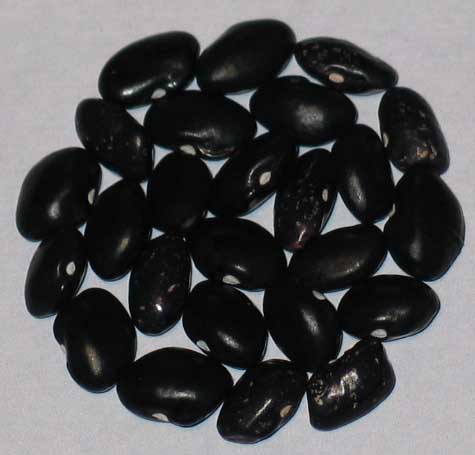
Blue Shaxamaxon
Packet Size 25 Seeds $5.00
Pole. Blue Shaxamaxon is a historic pole bean variety named after a traditional Lenape meeting and fishing site along the Delaware River, now part of Philadelphia's Kensington, Fishtown, and Port Richmond neighborhoods. Believed to be a pre-1800 variety, it was preserved by local Quaker farmers and is notable for its pods, which turn dark purple when dry. Traditionally, these beans were cooked in a dish known as black mush, a polenta made with blue or black cornmeal, highlighting their cultural significance and culinary heritage.
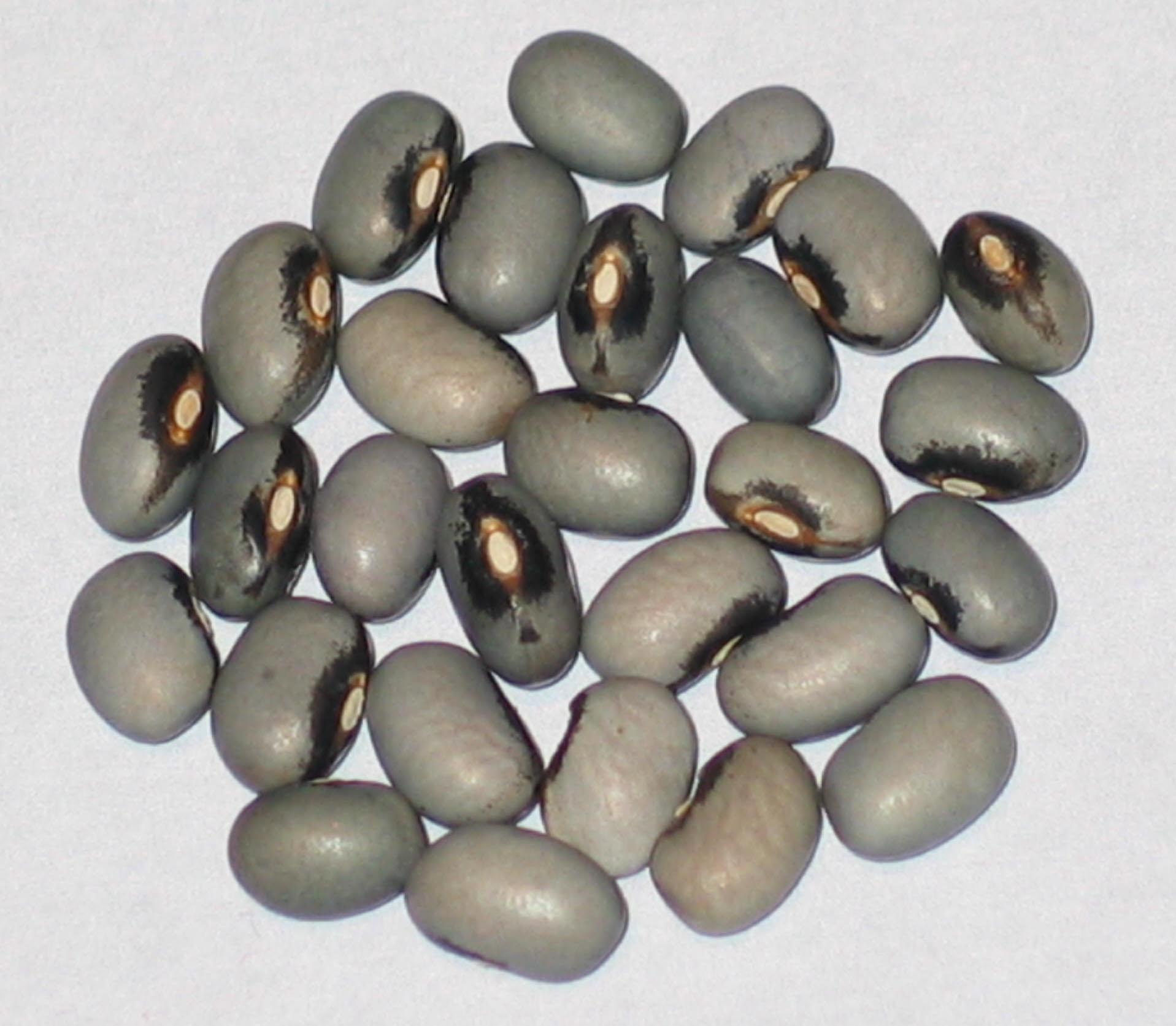
Blue Spitball
Unavailable
Pole/Dry. A highly productive pole dry bean variety, known for its abundant 4-inch pods that are easy to hand shell. This unique bean was discovered by world seed traveler Joseph Simcox and offered at a seed swap meeting, where his brother had given it its distinctive name. After several attendees grew the beans, it gained popularity, and was also acquired by another vendor in Pennsylvania from who I acquired the bean from a year later, further contributing to its cultivation and appreciation among gardening enthusiasts.
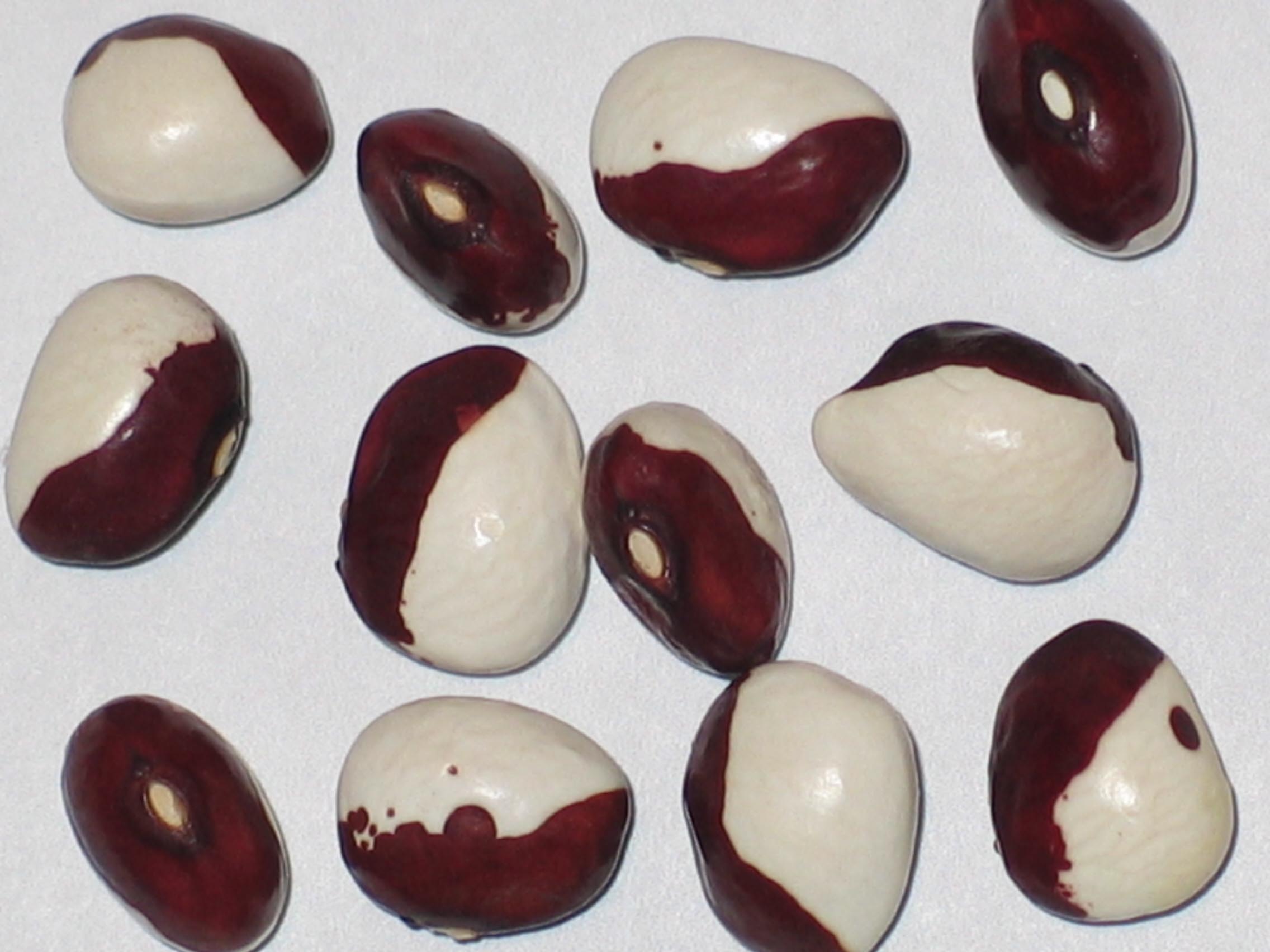
Bobolink
Packet Size 20 Seeds $5.00
Pole/dry. The Bobolink bean, also referred to as "Beautiful," takes approximately 95 days to mature for dry seed harvesting. I believe it may have historical roots in Maine, with several members of the Seed Savers Exchange noting their sources of the bean from that state, including John Withee of Wanigan Associates in the 1970s, who specifically cited Bowdoin, Maine, as a source. This heirloom variety is cherished not only for its aesthetic appeal but also for its adaptability and robust flavor, making it a valued addition to heritage seed collections and home gardens.
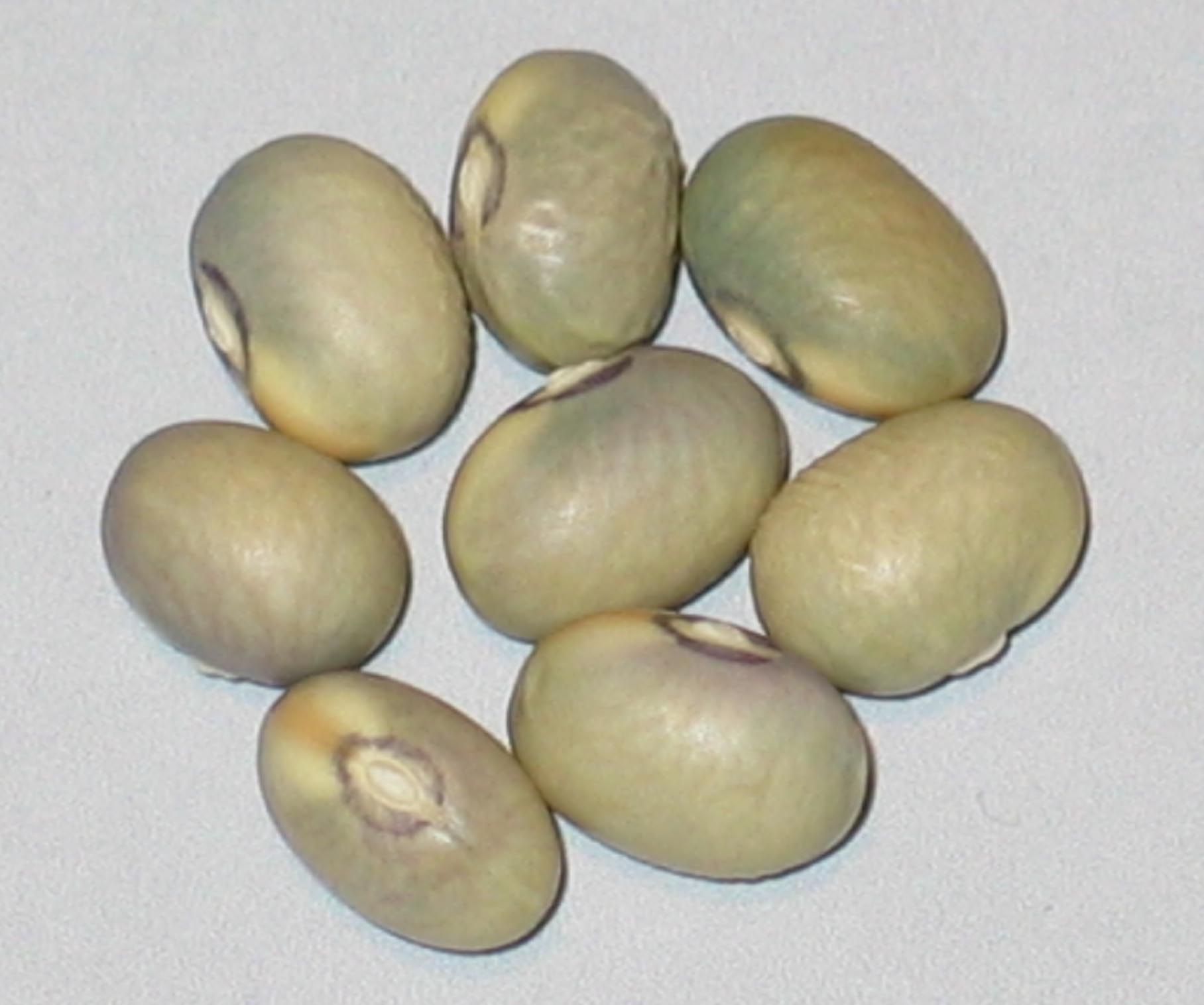
Bomba
Packet Size 30 Seeds $5.00
Bush variety. A dry bean from Ukraine, gained attention in the gardening community for its unique seed color. I acquired it through trading with Joseph Simcox, known as The Botanical Explorer, who has a passion for preserving and sharing rare plant varieties. Bomba is an interesting color choice for gardeners looking to explore different cultivars. Its introduction into home gardens reflects a growing interest in heirloom varieties and their historical significance.
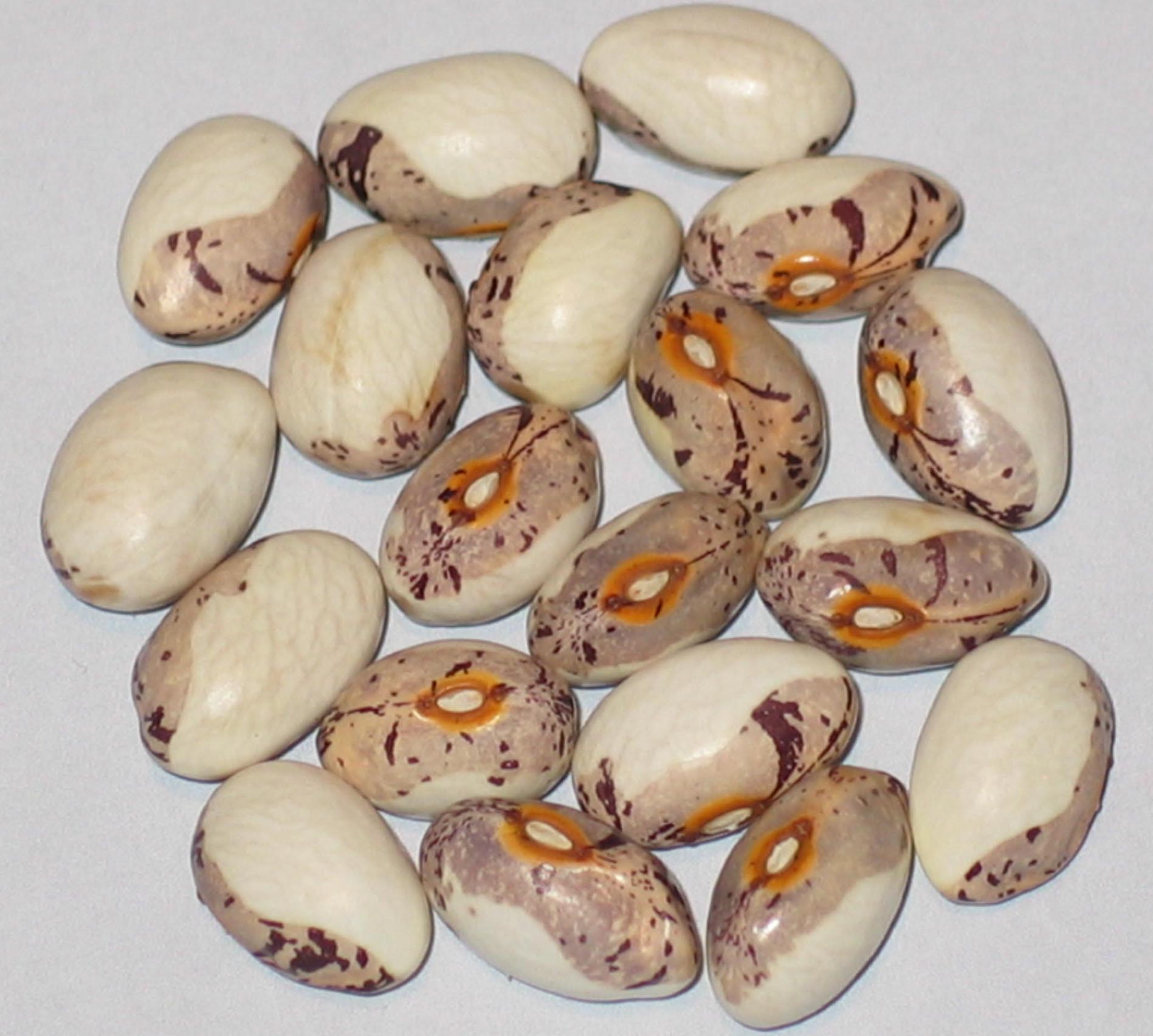
Bogen
Packet Size 20 Seeds $5.00
Pole Dry. A heritage variety that I plant in late May or early June, with an anticipated harvest of dry pods around mid-September. This bean's growing season allows for a complete harvest before the first frost in October, making it a reliable choice for home gardeners. Having originally grown and donated Bogen to Seed Savers Exchange in the early 1980s, it reflects my commitment to preserving this heirloom bean varieties. The Bogen bean continues to be valued among bean enthusiasts and those looking to maintain agricultural biodiversity.
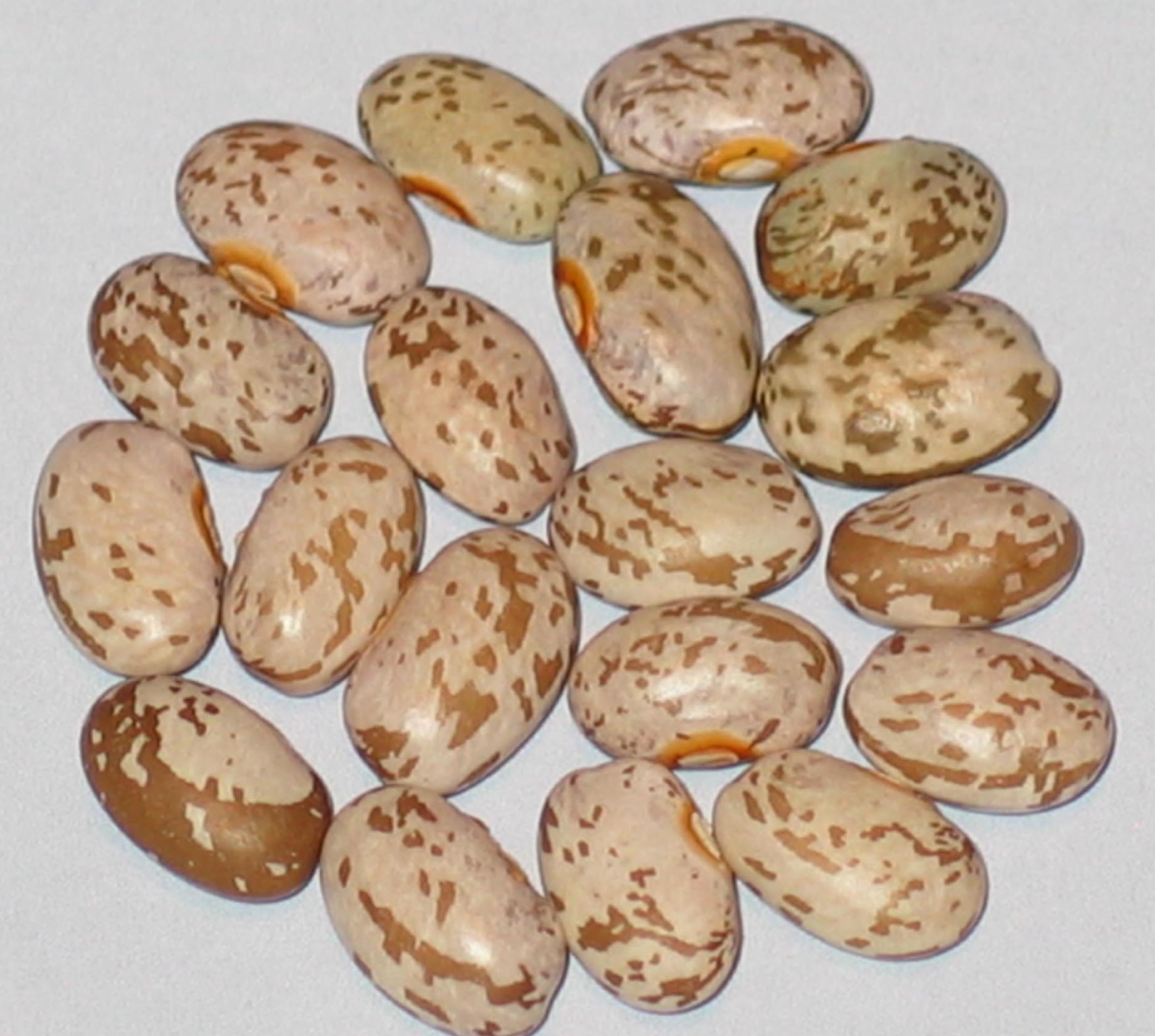
Bonanza Little Pinto
Packet Size 35 Seeds $5.00
Bush Dry. The "Bonanza Little Pinto" is known for its robust productivity and ease of cultivation, as it grows without runners. It typically produces its first dry pods in about 90 days, showcasing 5.5-inch pods that are ideal for both home gardening and culinary uses. Developed by Robert Lobitz of Paynesville, Minnesota and introduced through the Seed Savers Exchange in 2004, this genuine bush pinto bean is celebrated for its reliable growth and flavorful beans, making it a popular choice among gardeners and bean enthusiasts seeking to add a high-yielding variety to their collections.
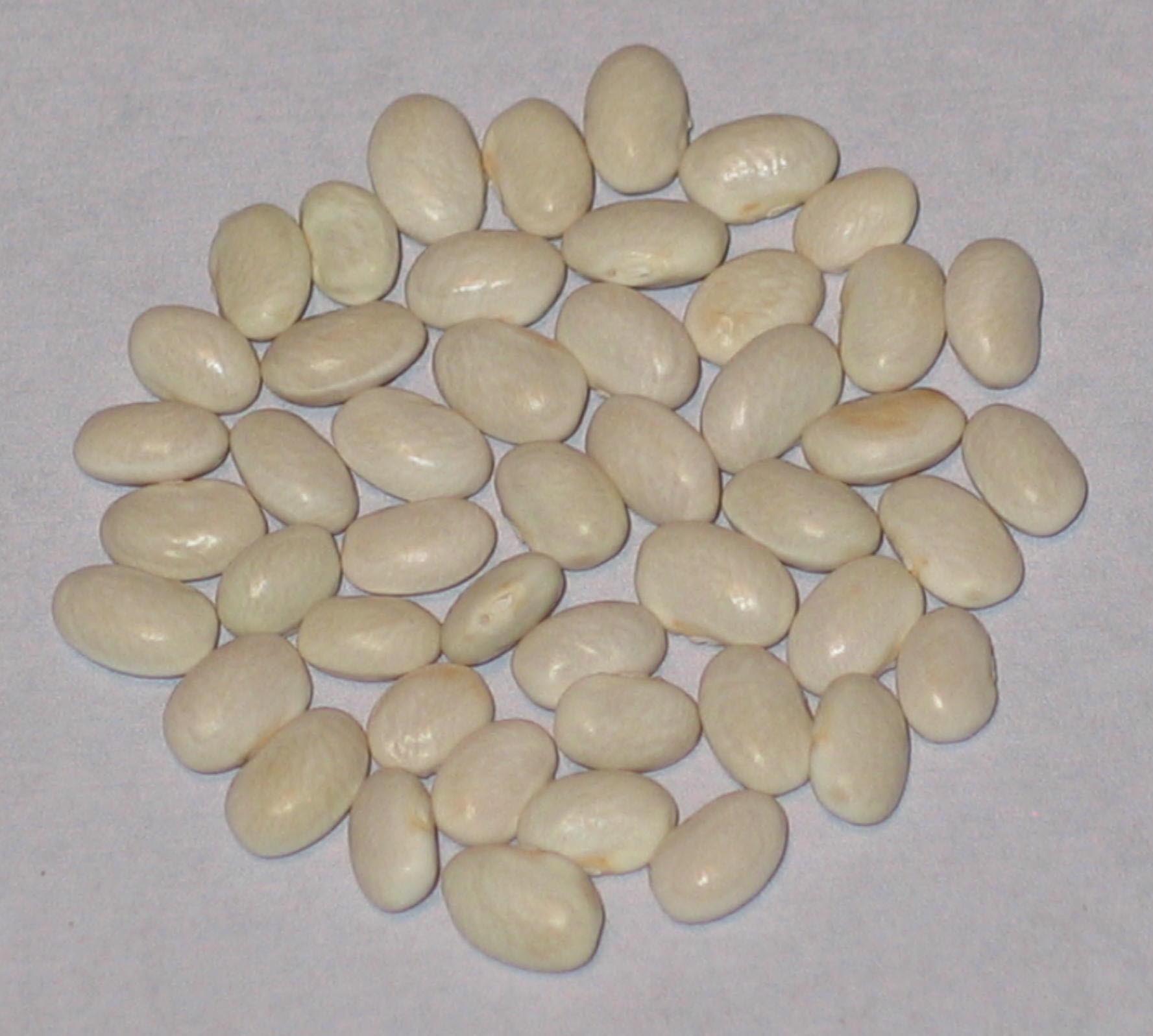
Bonanza Valley Navy
Packet Size 35 Seeds $5.00
Bush Dry. Matures in approximately 85 days, producing notable pink blossoms. This variety is characterized by its heavily branching plants, which yield an abundance of pods measuring between 3 to 3.75 inches in length. Developed by Robert Lobitz, the Bonanza Valley Navy bean is prized for its prolific output and flavorful beans, making it an excellent choice for gardeners looking to maximize their harvest with a reliable and productive variety.

Bountiful
Packet Size 30 Seeds $5.00
Bush/snap. This variety reaches pickable pods in just 47 to 50 days, making it an early and productive choice for gardeners. Known for its stringless, flat pods that retain their quality long after harvest, this variety was introduced by the Peter Henderson Company in 1898. The name "Bountiful" was selected through a naming contest held by the company, with Abel Steele of Ferguson, Ontario, winning a $25 prize in 1897 for his contribution, which aptly reflects the generous yield this bean variety offers.
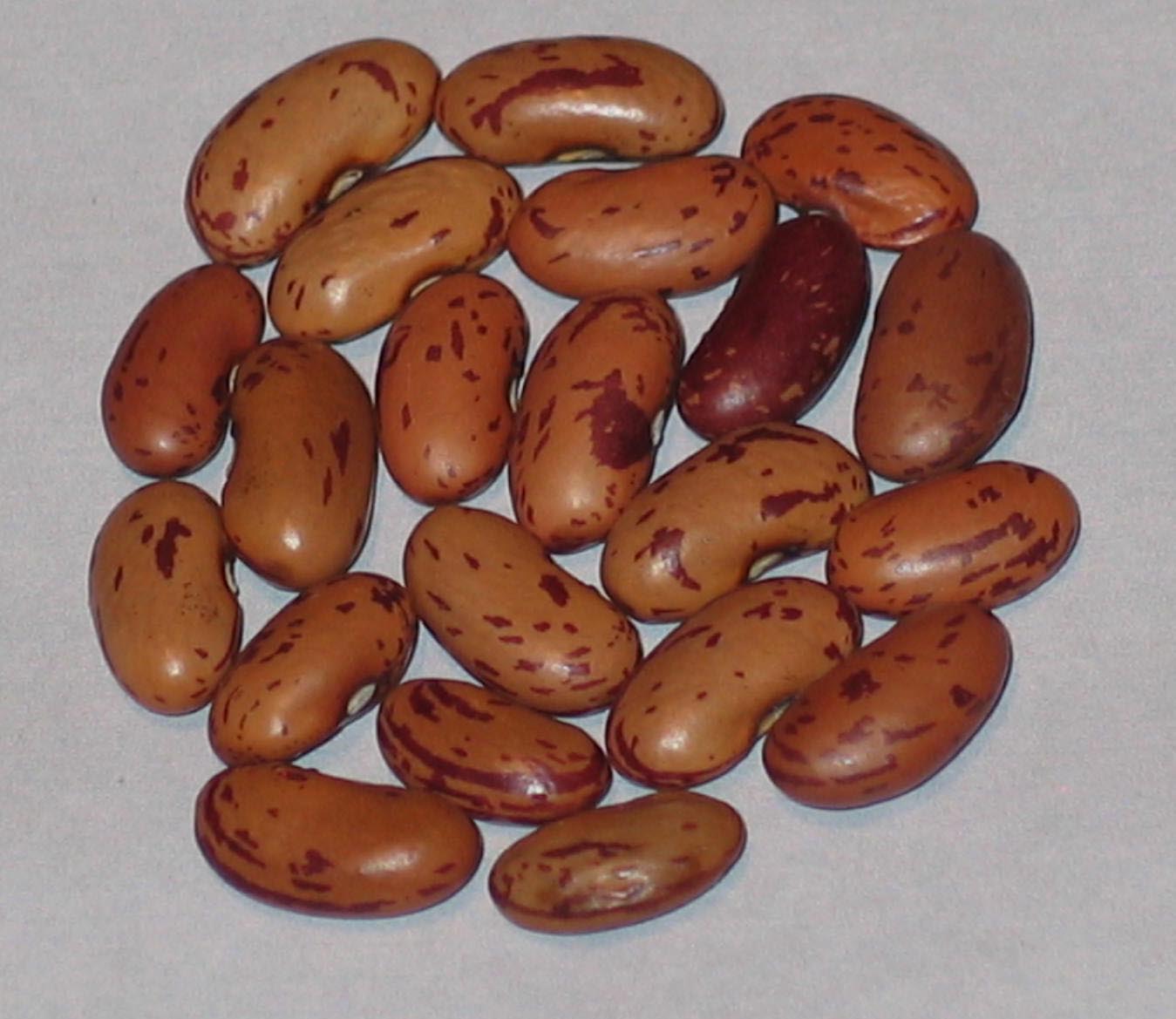
Borlotto Di Seluggia
Packet Size 25 Seeds $5.00
Bush/Dry. This variety matures in approximately 90 days, producing its first dry pods. Known as a cranberry-type bean, it has been cultivated since the early 1900s in the Seluggia region of Italy. This variety offers productivity on par with other similar beans, making it a reliable choice for gardeners seeking flavorful and visually striking beans for cooking and storage.
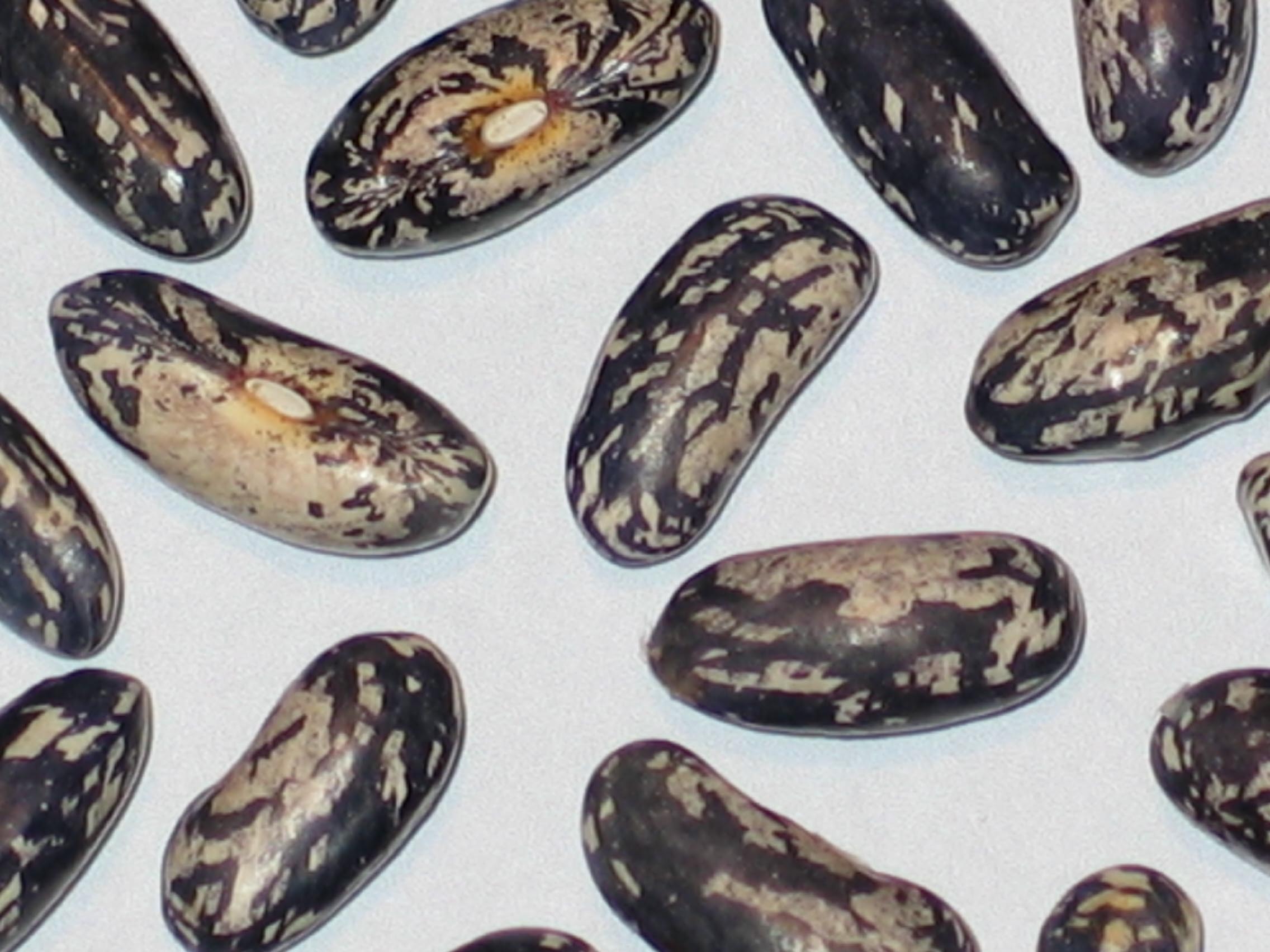
Bountiful Ester
Packet Size 30 Seeds $5.00
Bush/Dry. This bean variety that takes about 100 days to mature it's first dry seed. Characterized by sprawling, viney plants that do not climb. While there is little ancient history associated with this bean, it is primarily attributed to Ralph Coon of Flint, Michigan, who began its development around the mid-1980s. This variety combines practicality for garden spaces with the potential for a productive yield, making it an interesting option for bean enthusiasts.
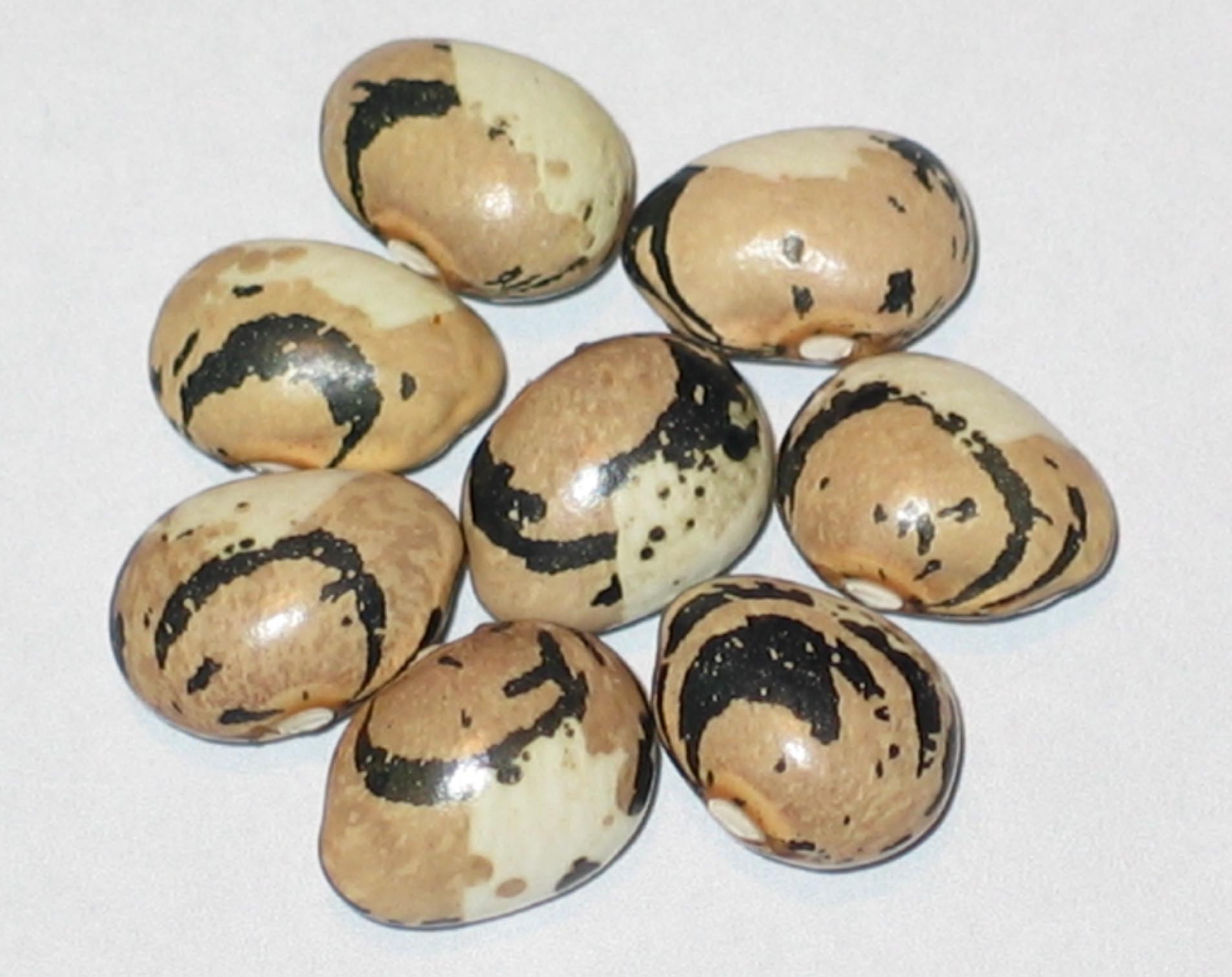
Bosnian Pole
Packet Size 20 Seeds $5.00
Pole/Snap. Said to be a snap bean variety with a maturation period of 65 to 75 days for snaps and 95 days for full dry pods. Known for its striking white blossoms, it produces thick, meaty, stringless pods that measure about 5 inches in length. This variety hails from Bosnia, with a unique characteristic where a white patch appears on the seeds as they age. It was acquired through a bean swap with Shirley Bellows, a representative from western Canada for Seeds of Diversity Canada, adding a story of community and heritage to this beautiful bean.
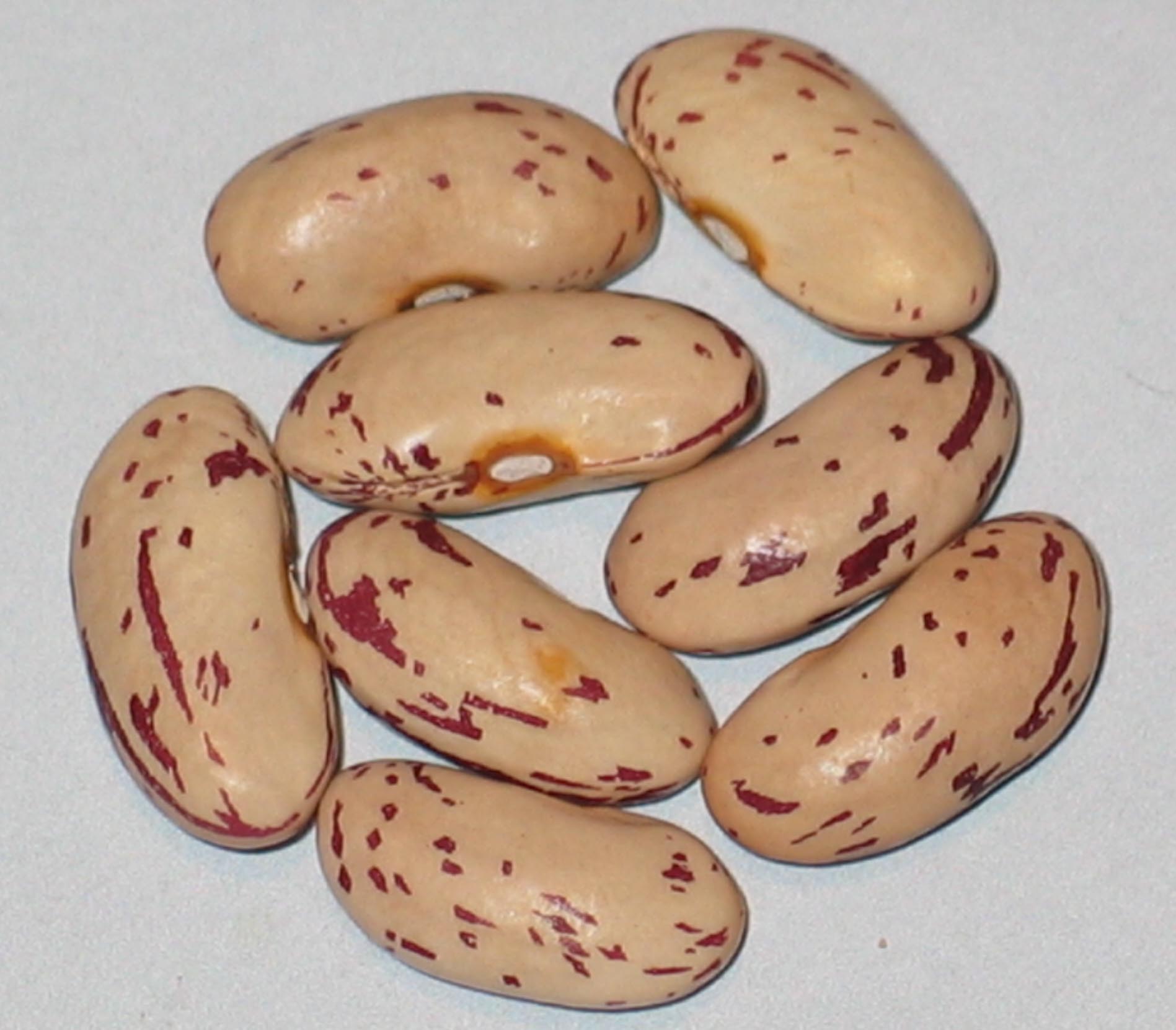
Boston Favorite
Sold Out
Bush/Dry. This bean variety matures its first dry pod in roughly 90 days, with most dry pods ready within about 115 days. The beans produce six-inch green pods adorned with light red splashes. Originally known as Godard, this heirloom variety was cultivated in the Boston area before 1885 and initially featured a runner-forming habit; however, today's strains have been improved to grow without runners, making them more suitable for modern gardening while still preserving the old cranberry or horticultural type seed characteristics.
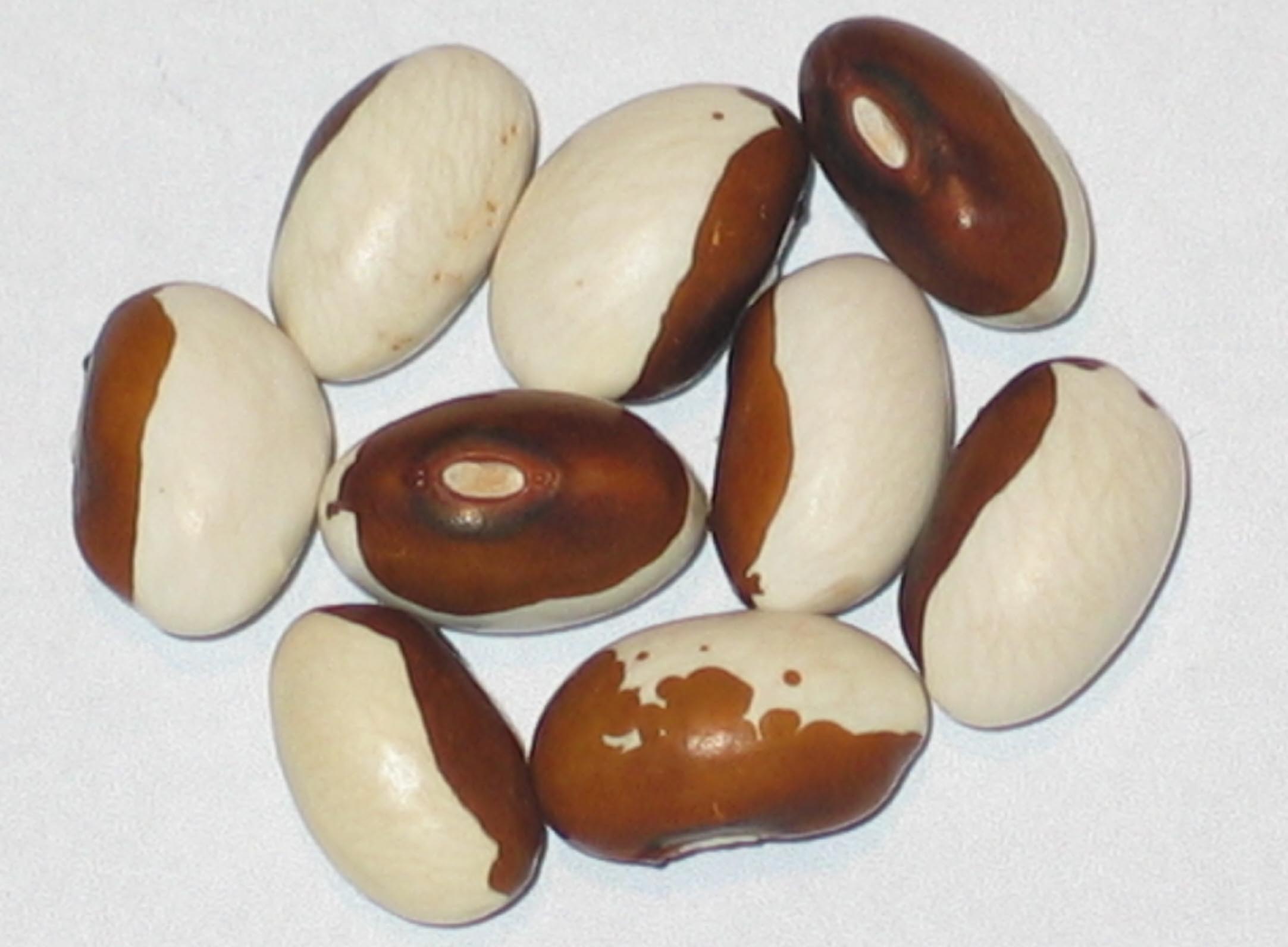
Brauner Bar
Packet Size 25 Seeds $5.00
Semi-Runner/Dry. Known for its white blossoms and early maturity, producing its first dry pods in about 90 days. These productive, viney plants can be grown like a bush but thrive better when given support, such as climbing on hog panels; this method will significantly increase it's yield for the grower. The name "Brauner Bar" translates to "Brown Bear" in English, and its unique seed coat exhibits a distinct brown and white pattern reminiscent of the Molasses Face variety.

Bregenzer
Packet Size 20 Seeds $5.00
Pole/Dry. I acquired this bean through a trade in 2013, thanks to an Austrian enthusiast named Harriet Mella. This charming bean features rounded seeds displaying a distinctive Bobolink pattern, characterized by a red area that is not centered around the eye but rather concentrated at one end of the seed. Its unique appearance and origins contribute to its appeal among bean collectors and gardeners.
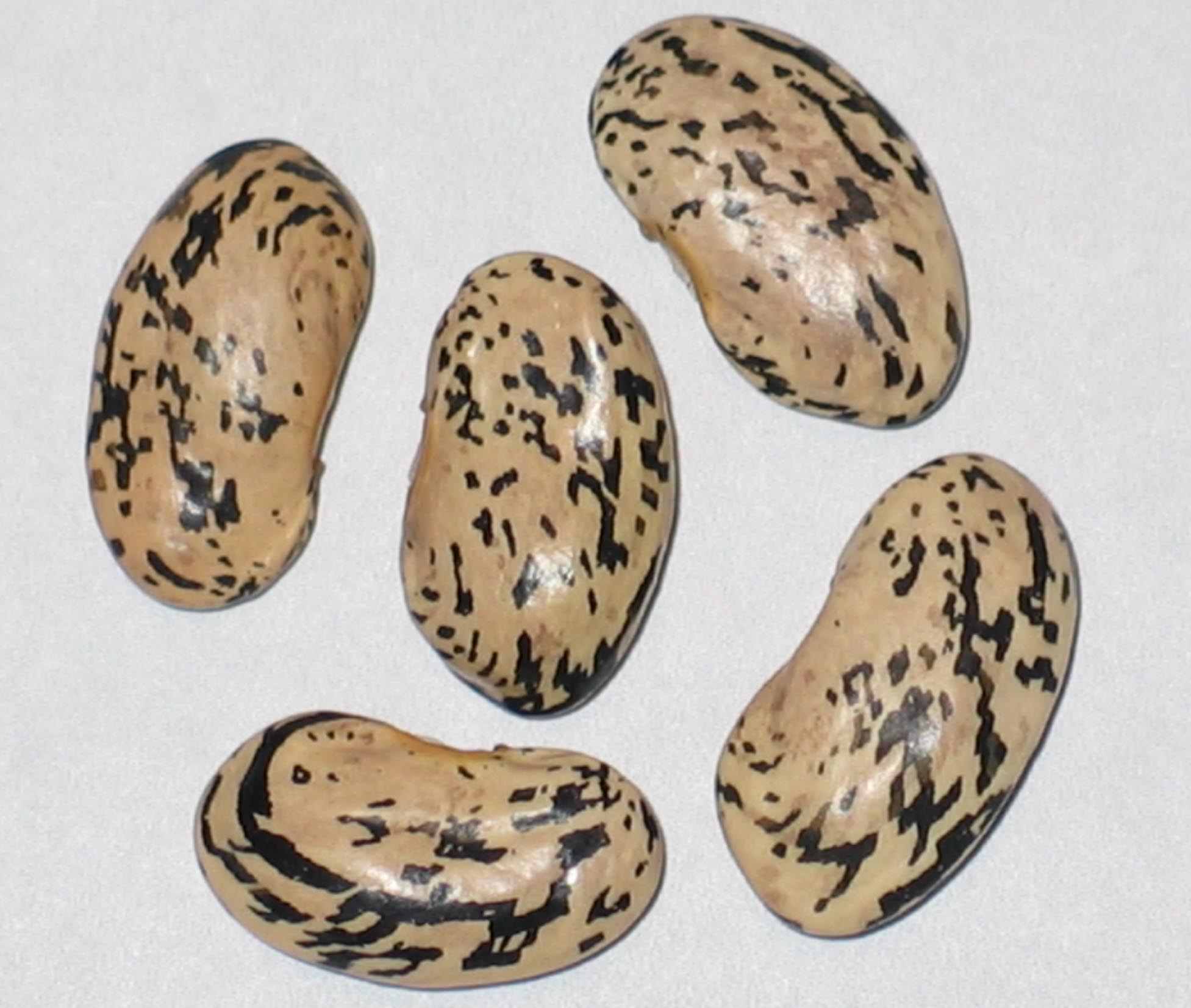
Brejo
Packet Size 20 Seeds $5.00
Pole/Snap. An early maturing bean variety, taking 90 to 95 days to harvest, characterized by vigorous vines that produce violet flowers and long, wide flat pods measuring about 8 inches. The pods are speckled in maroon and remain crisp for an extended period, making them desirable for harvest. Known for its cold hardiness and adaptability to wet spring conditions, Brejo seeds can reportedly be direct sown once daytime temperatures reach around 60 degrees. This very old variety has been preserved by Native American communities, highlighting their cultural and agricultural significance.
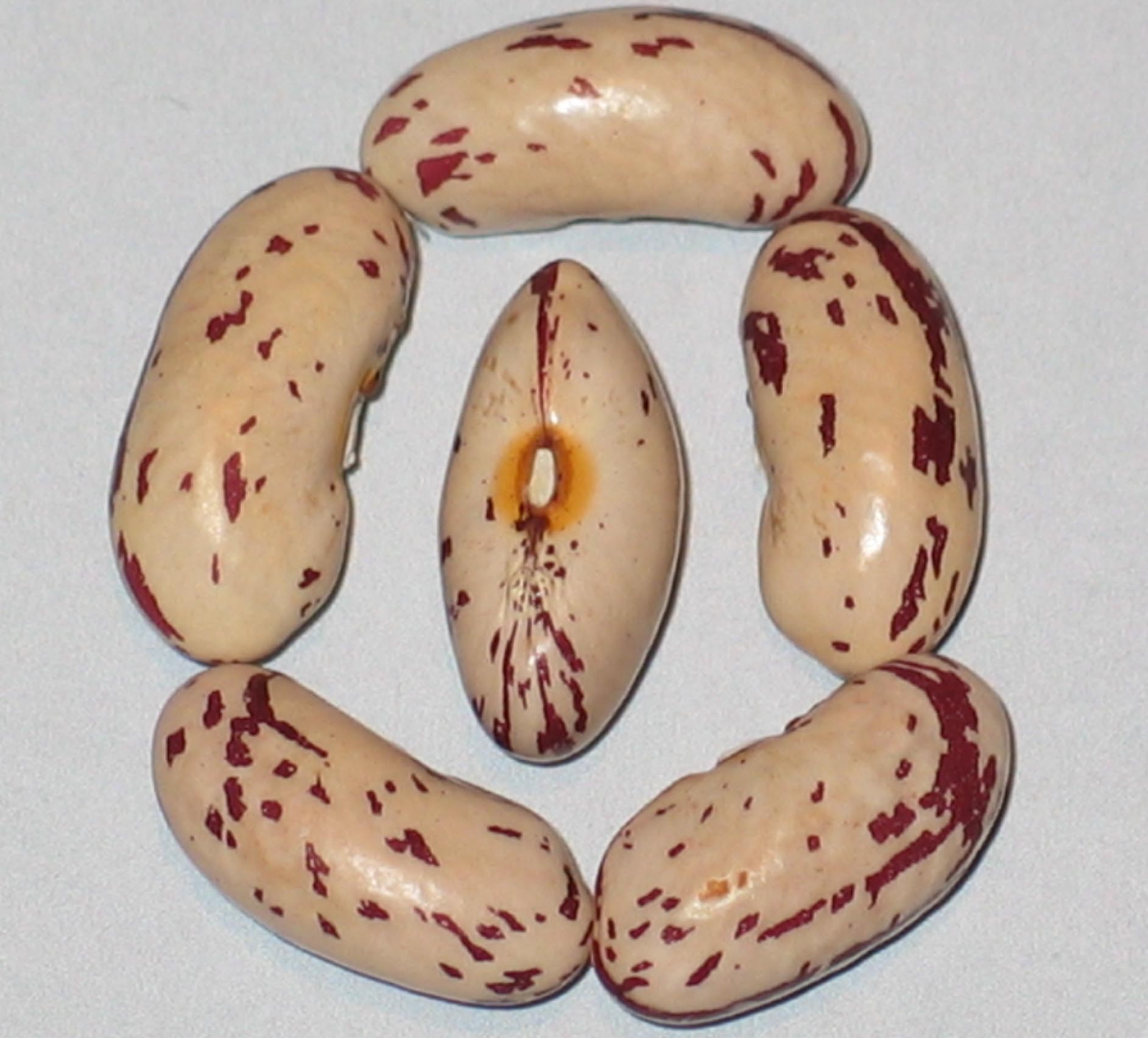
Brilliant
Packet Size 20 Seeds $5.00
Semi-Runner/Dry. A variety developed by J.R. Hepler in 1946 at the University of New Hampshire. It is known for its productivity and features large, somewhat kidney-shaped seeds with a tan base, streaked and speckled with red. Following its development, the variety was marketed by his son's seed company, Billy Hepler Seed Co., from the late 1940s through the early 1950s. Its distinct appearance and history make it a notable choice for bean enthusiasts and collectors.

Brittle Wax
Packet Size 35 Seeds $5.00
Bush/snap. Yellow poded. Early, prolific, 45-55 days to snaps. Introduced in 1900 by the Johnson And Stokes seed company under the name Twentieth Century Dwarf Wax. The name was changed to Brittle Wax in 1902 as the result of a naming contest. A cross between Black-eyed Wax and Round-pod Refugee. Therefore a half brother of Round-pod Kidney Wax and Pencil Pod Black Wax through the Round-pod Refugee parentage.

Brooten
Packet Size 25 Seeds $5.00
Brooten is a bush dry bean variety known for its high productivity, featuring pods that grow 6 to 7 inches long. Its development began in 2015, using genetic material left behind by Robert Lobitz after his passing. The original seeds were obtained from the late Ron Thuma, a member of the Seed Saver Exchange from Hartford, Kansas. Brooten's lineage ties it to a commitment to preserving and enhancing heirloom bean varieties, celebrated for their heritage and agricultural value.
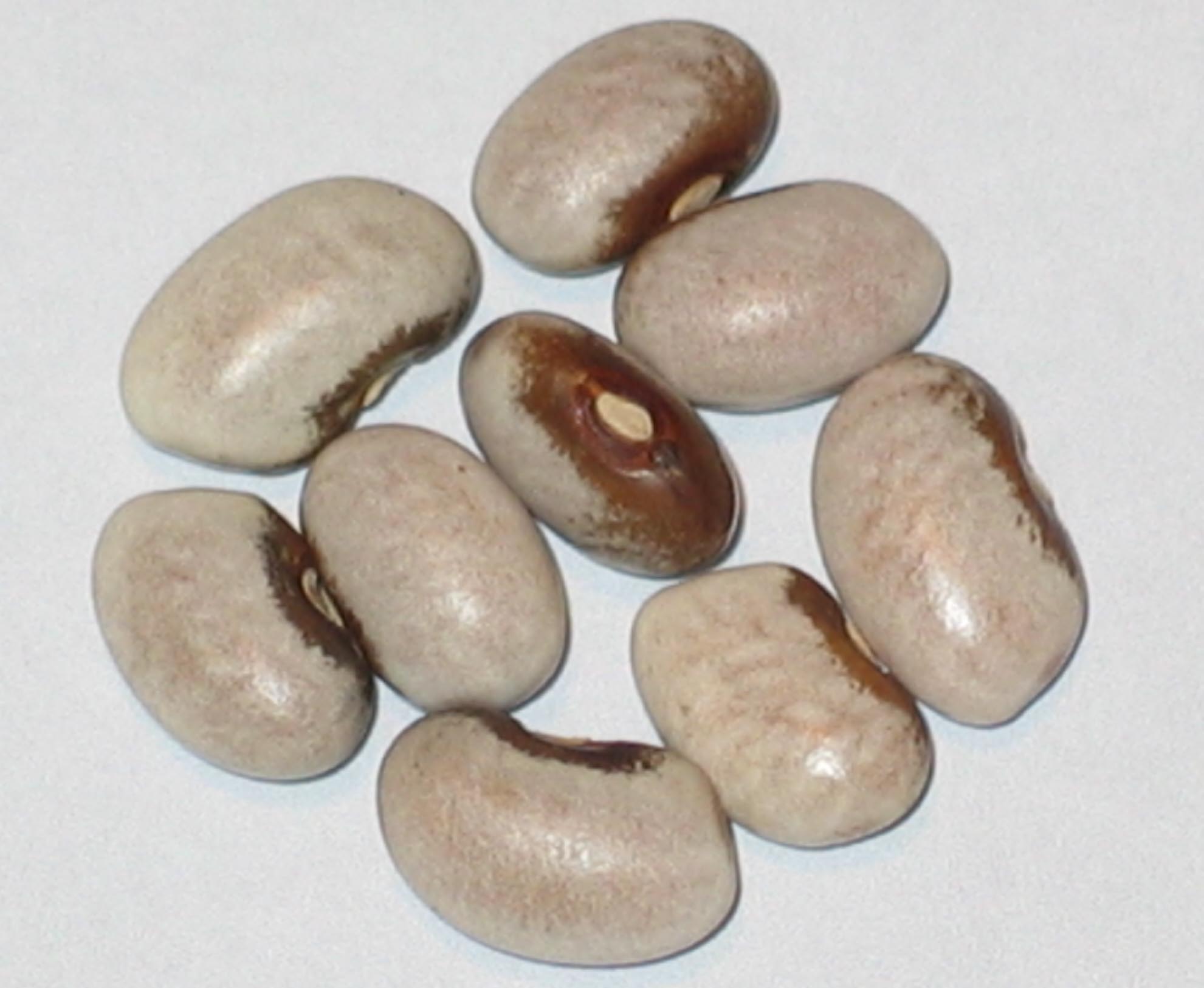
Brown-Eyed Goose
Packet Size 25 Seeds $5.00
Pole/Dry. Discovered in my garden and named by me around 1980. Inspired by a fascination with beans bearing "goose" in their names and their intriguing origins, this early-maturing and highly productive bean has garnered a following among gardeners worldwide. It produces an abundant yield of aesthetically pleasing pods with attractive purple mottling as they mature, and its thin pod walls facilitate easy hand shelling, making it a favorite among bean enthusiasts.